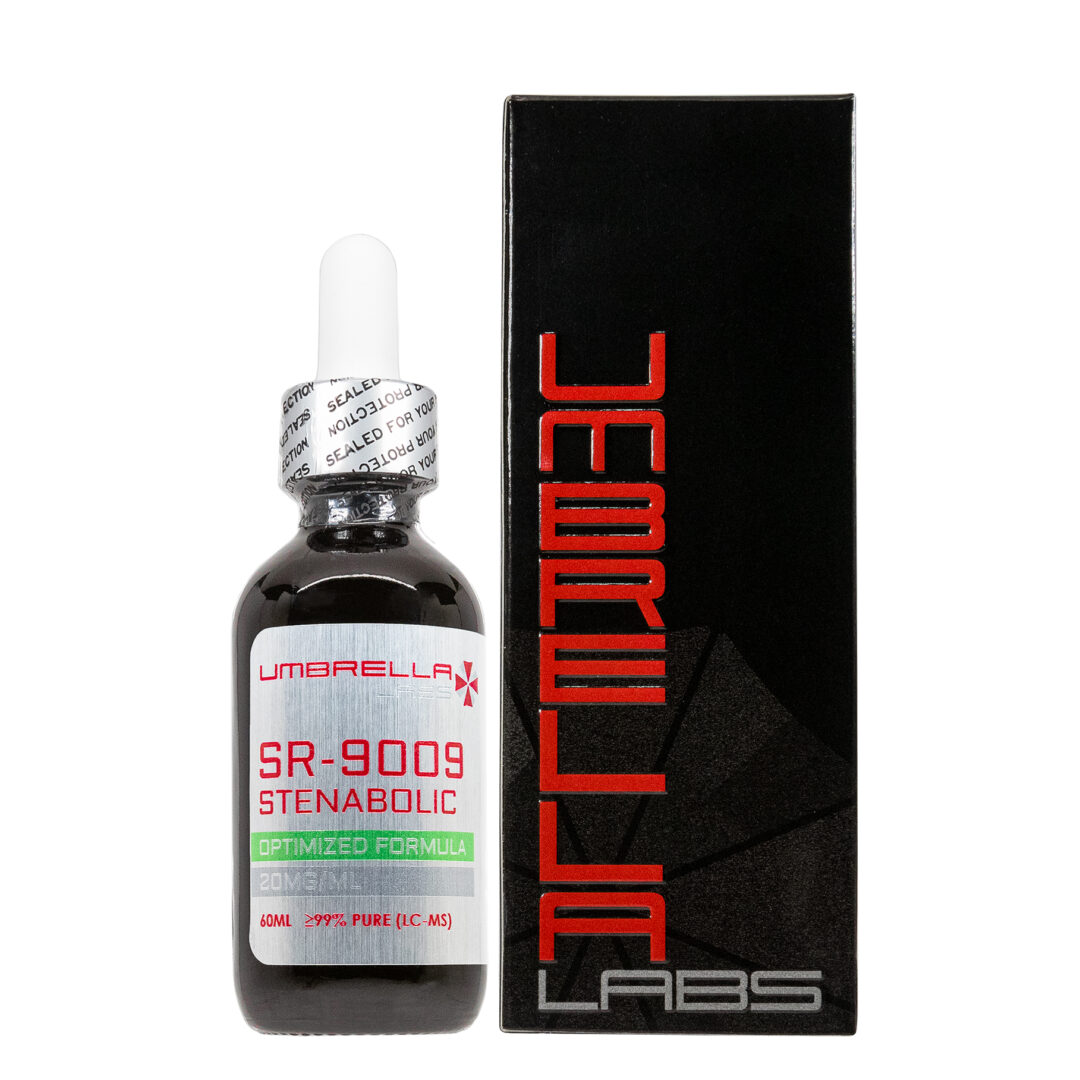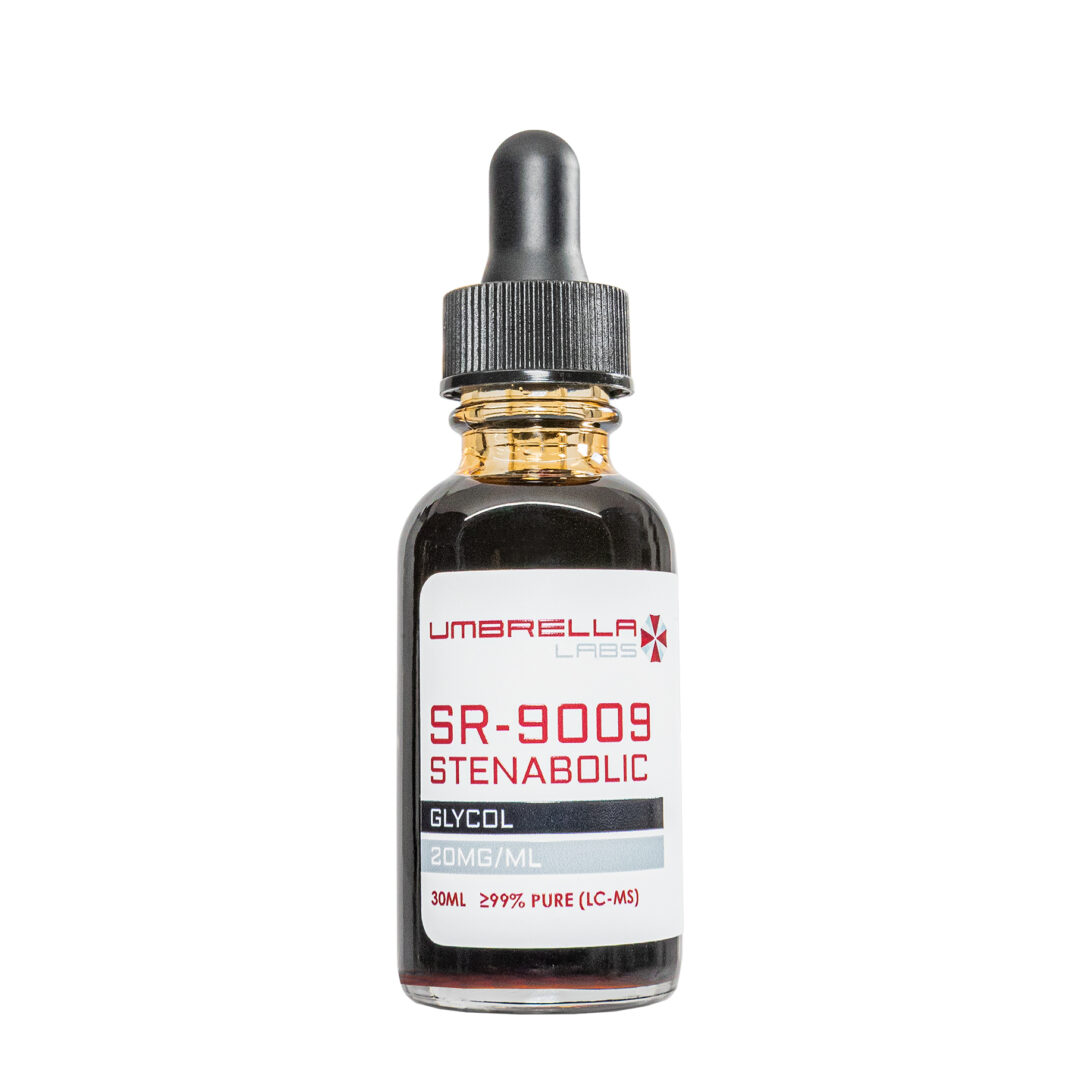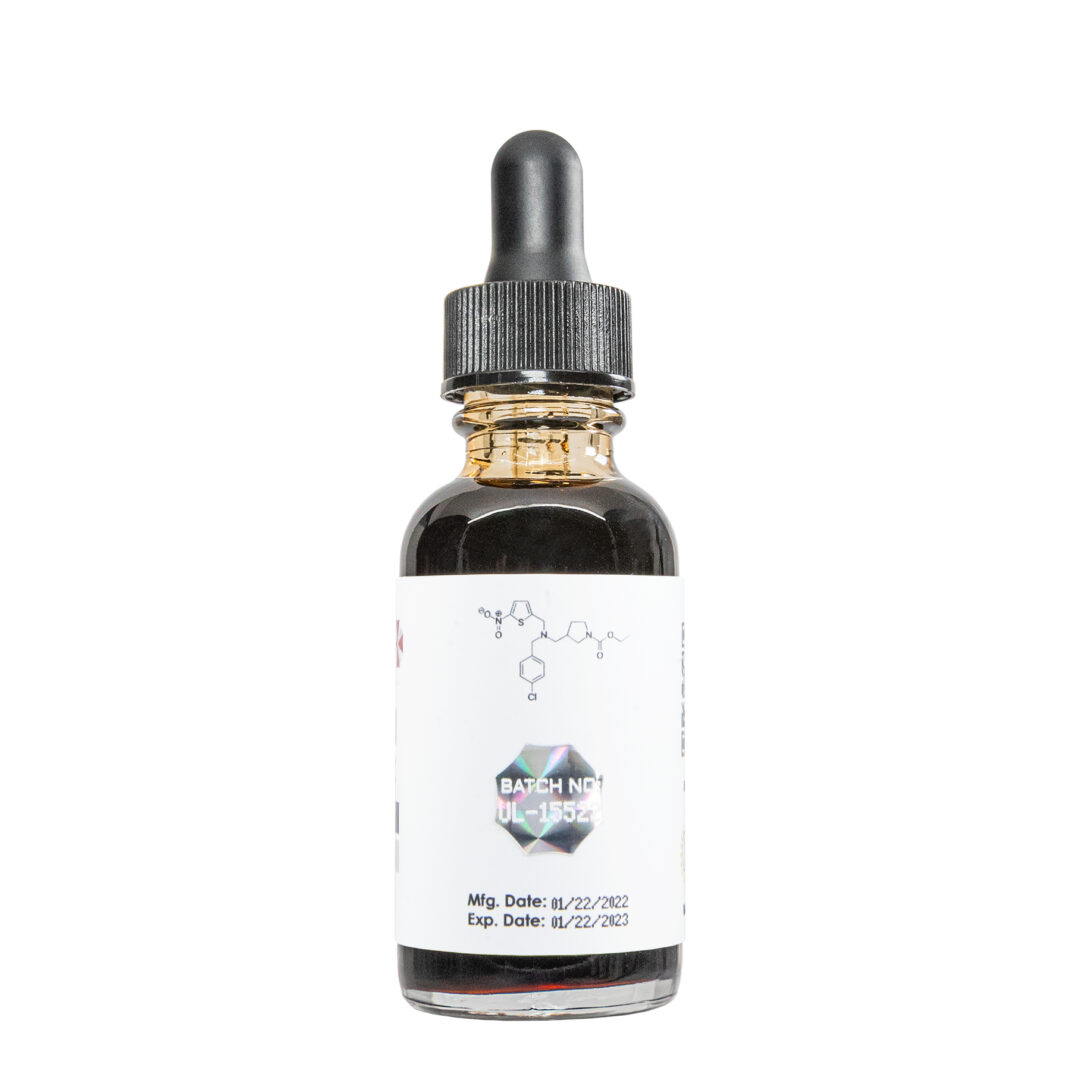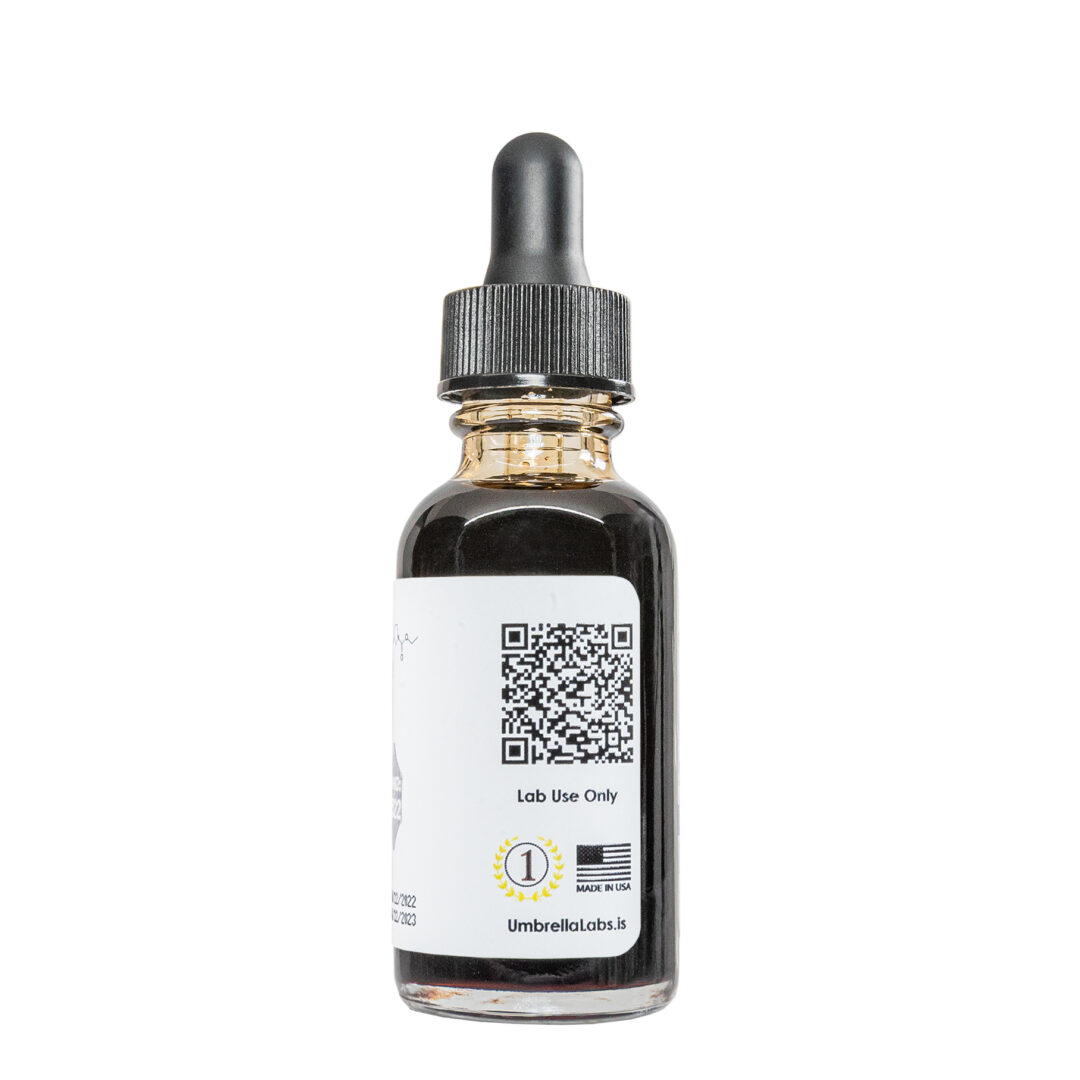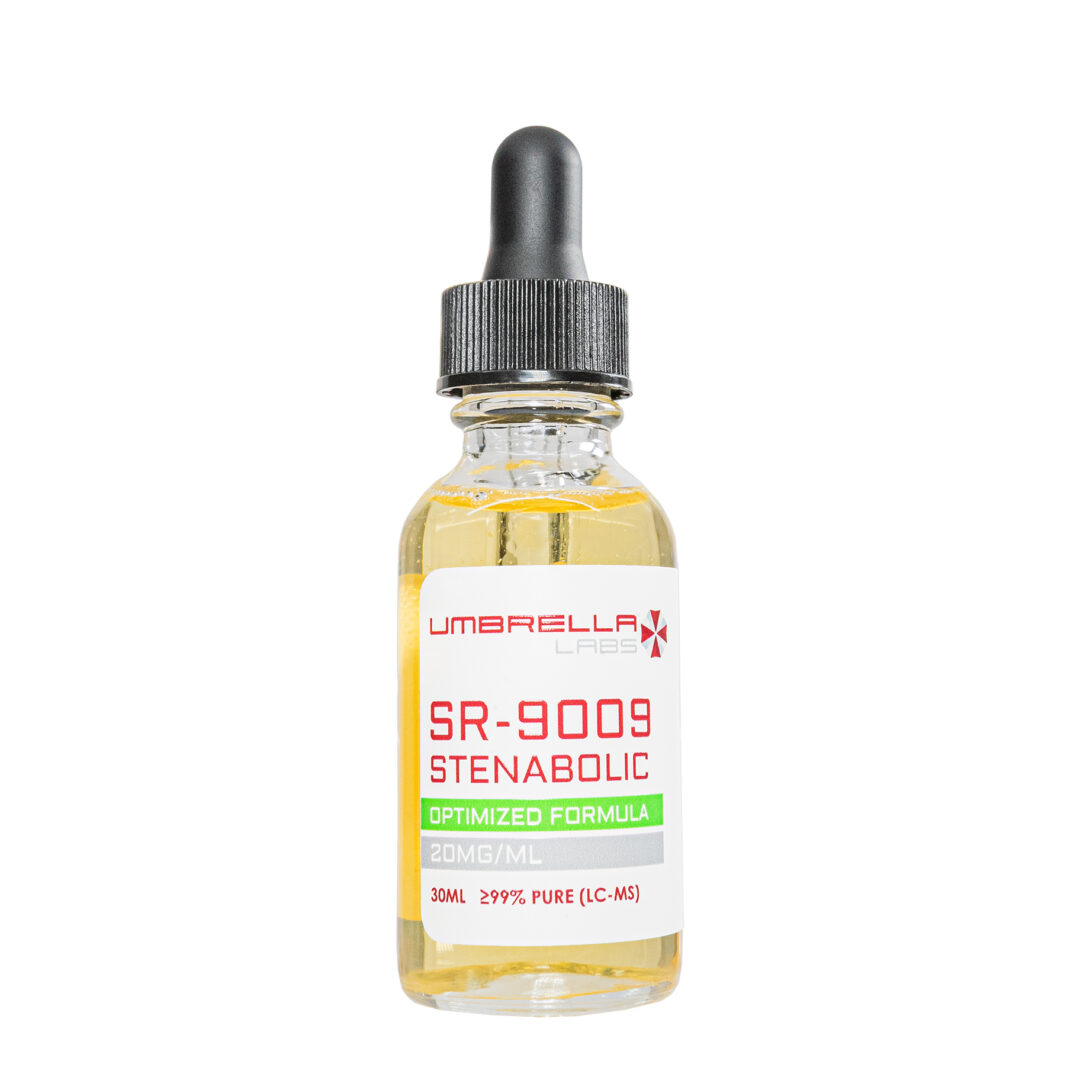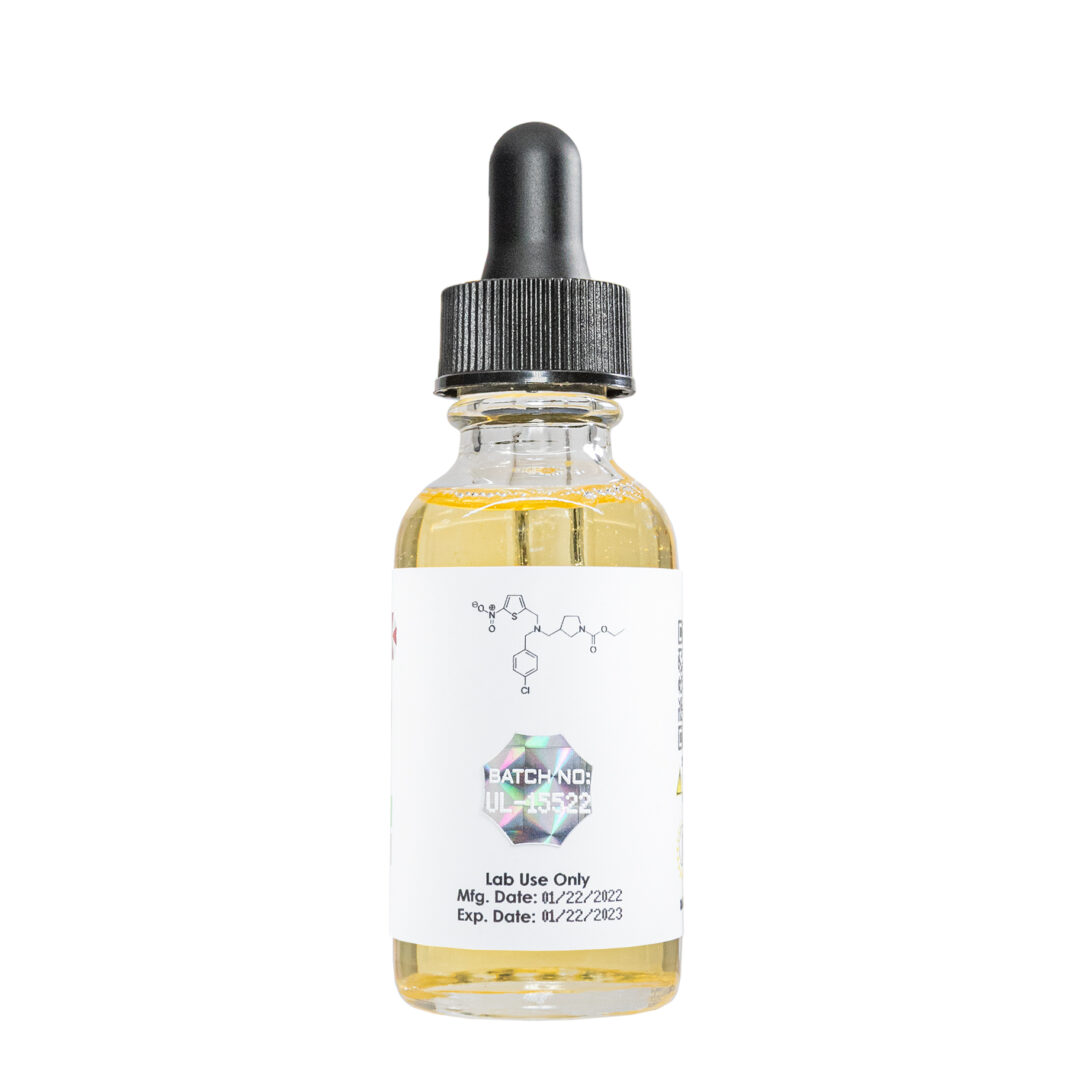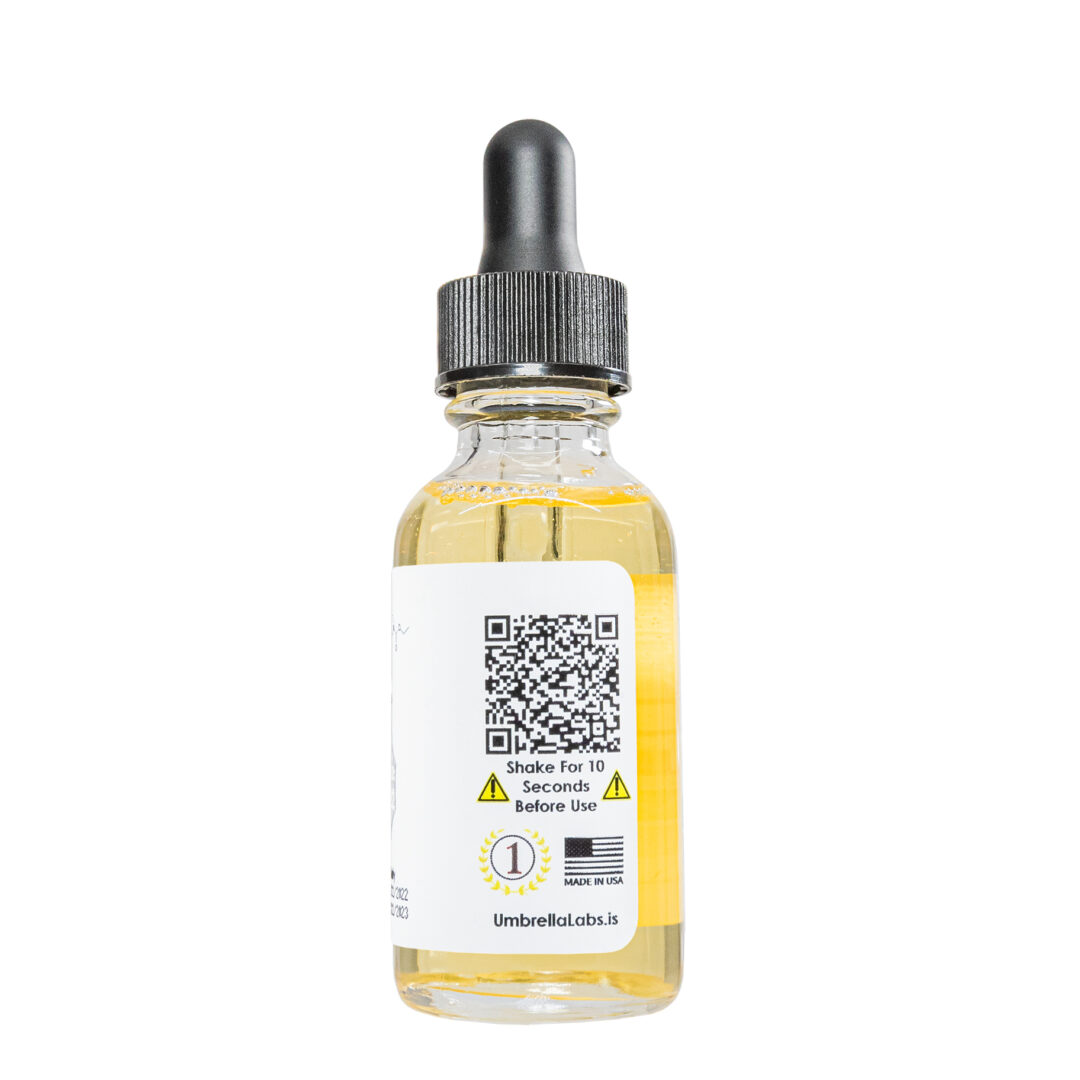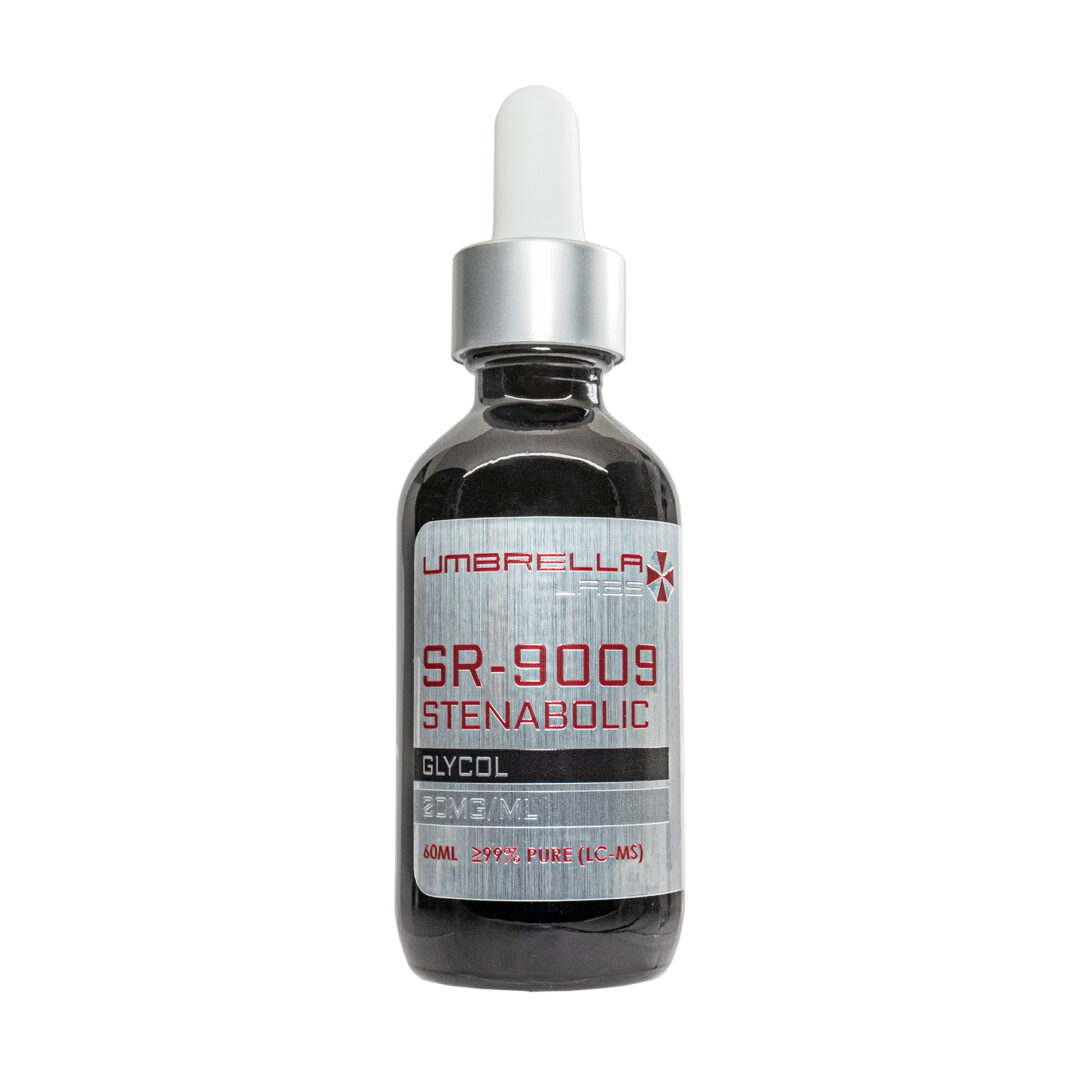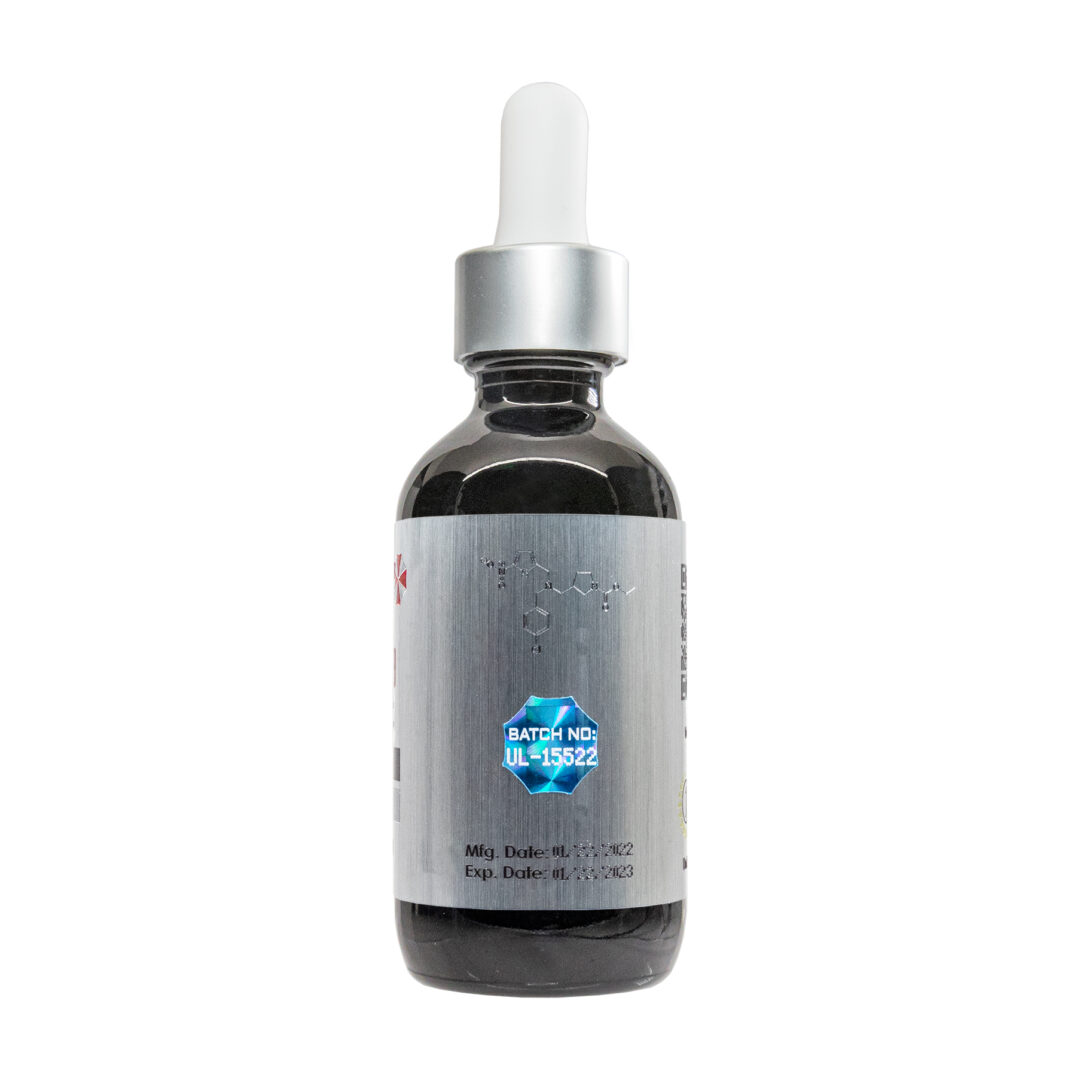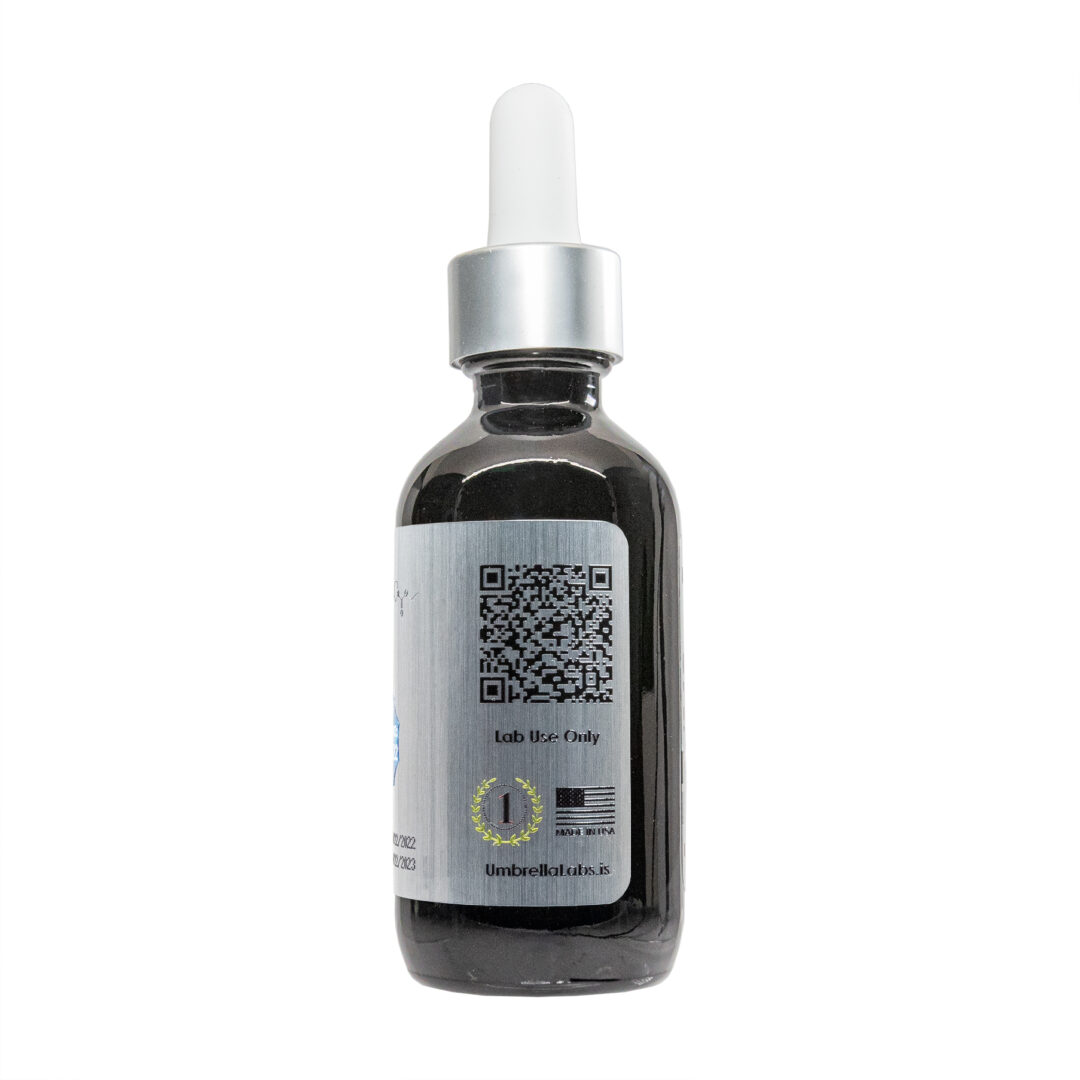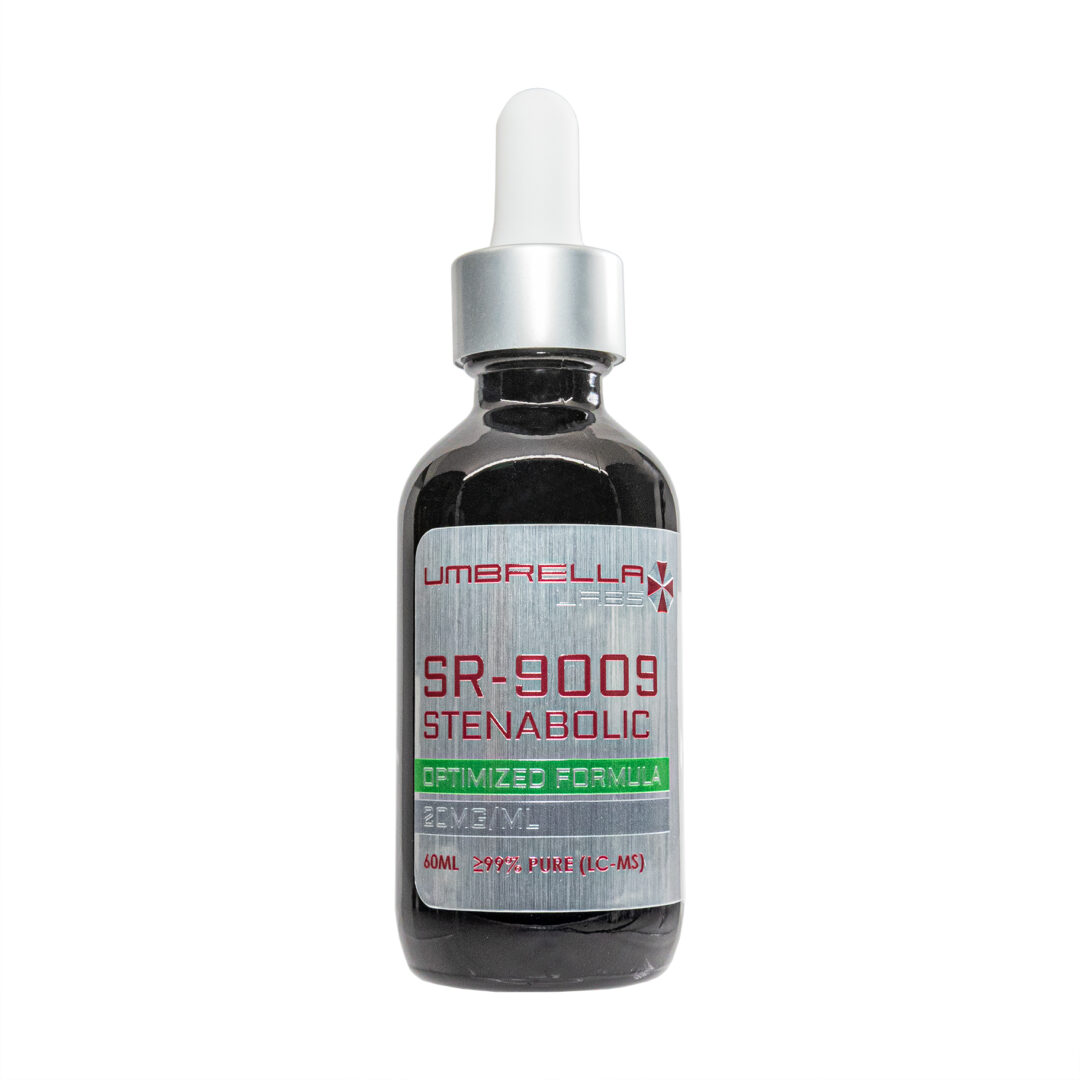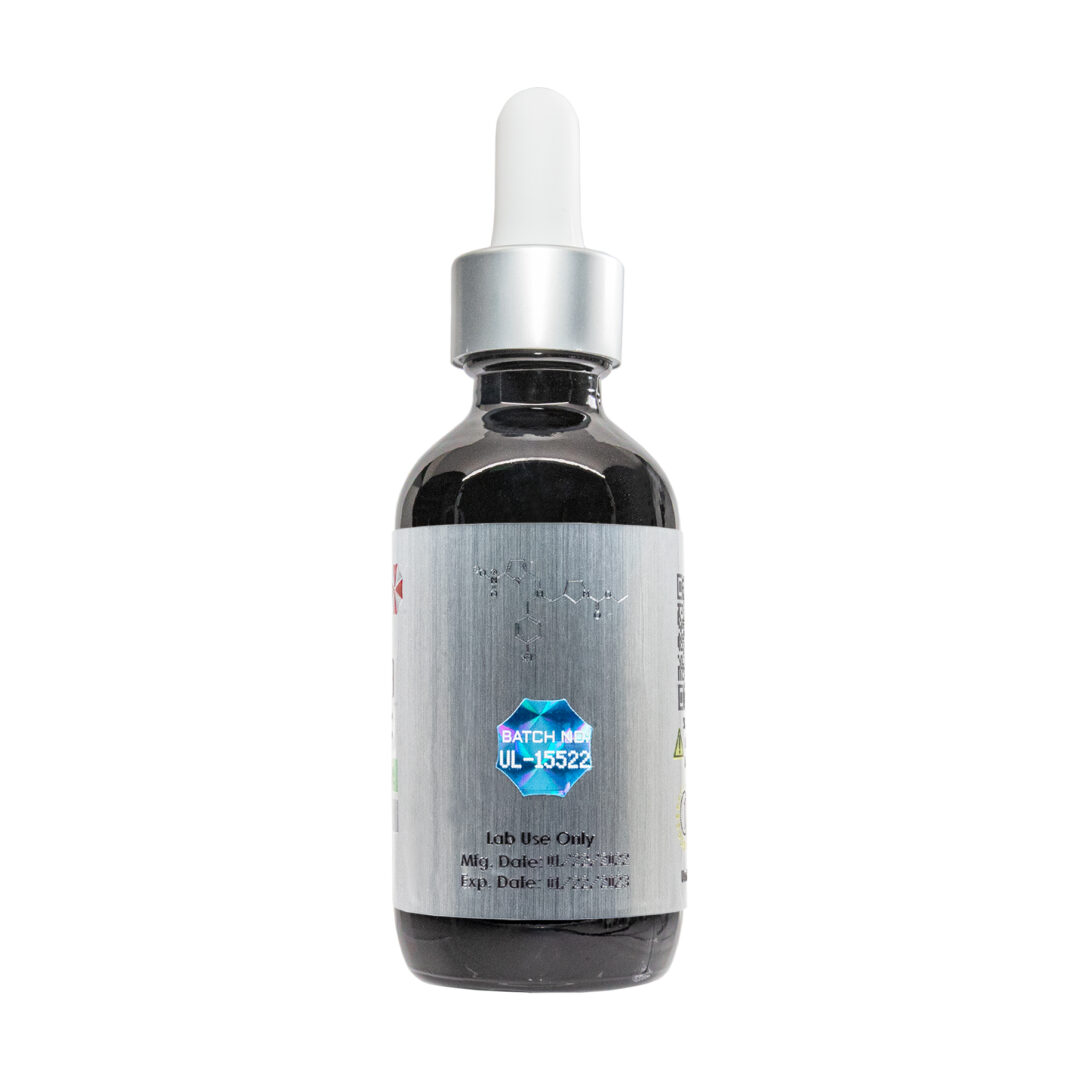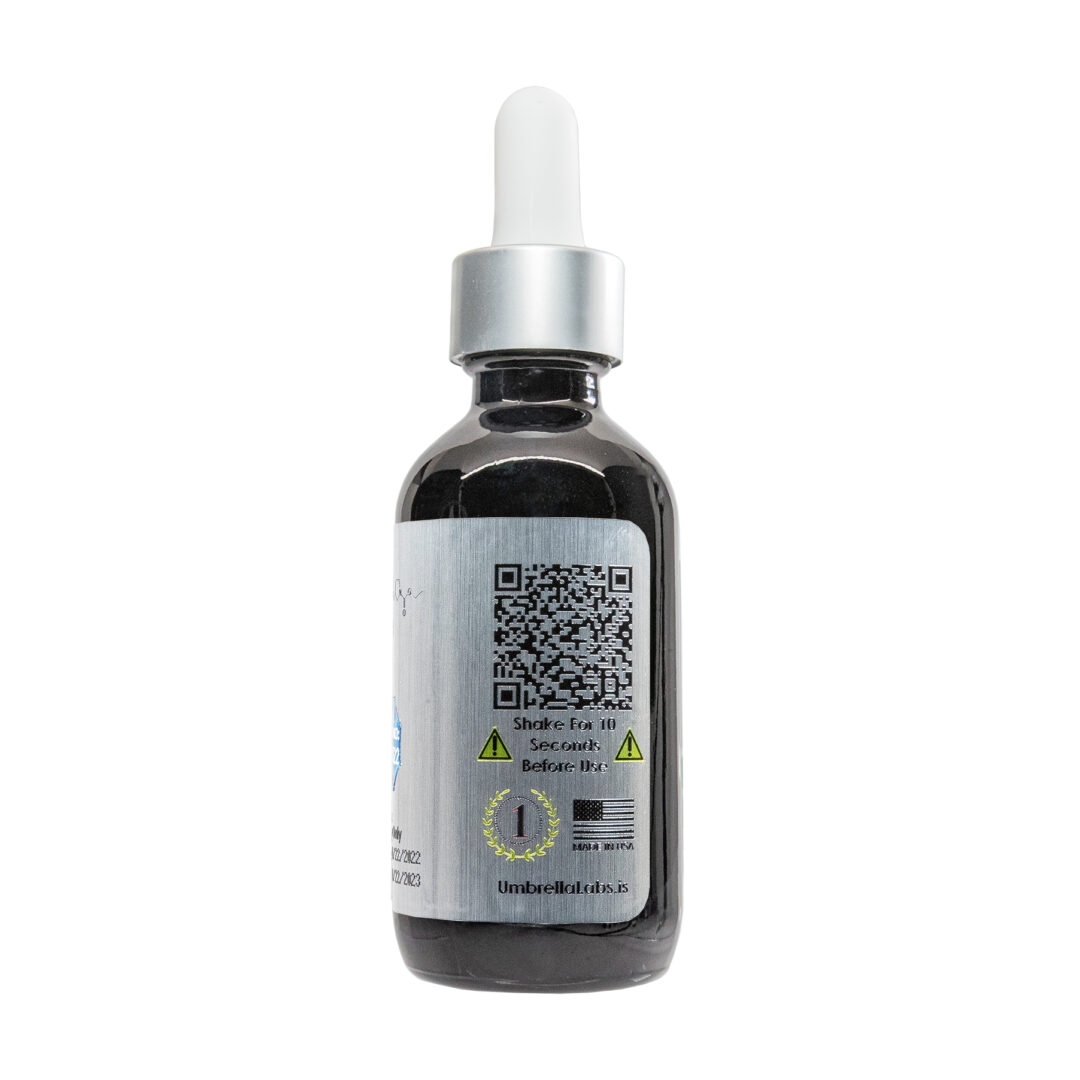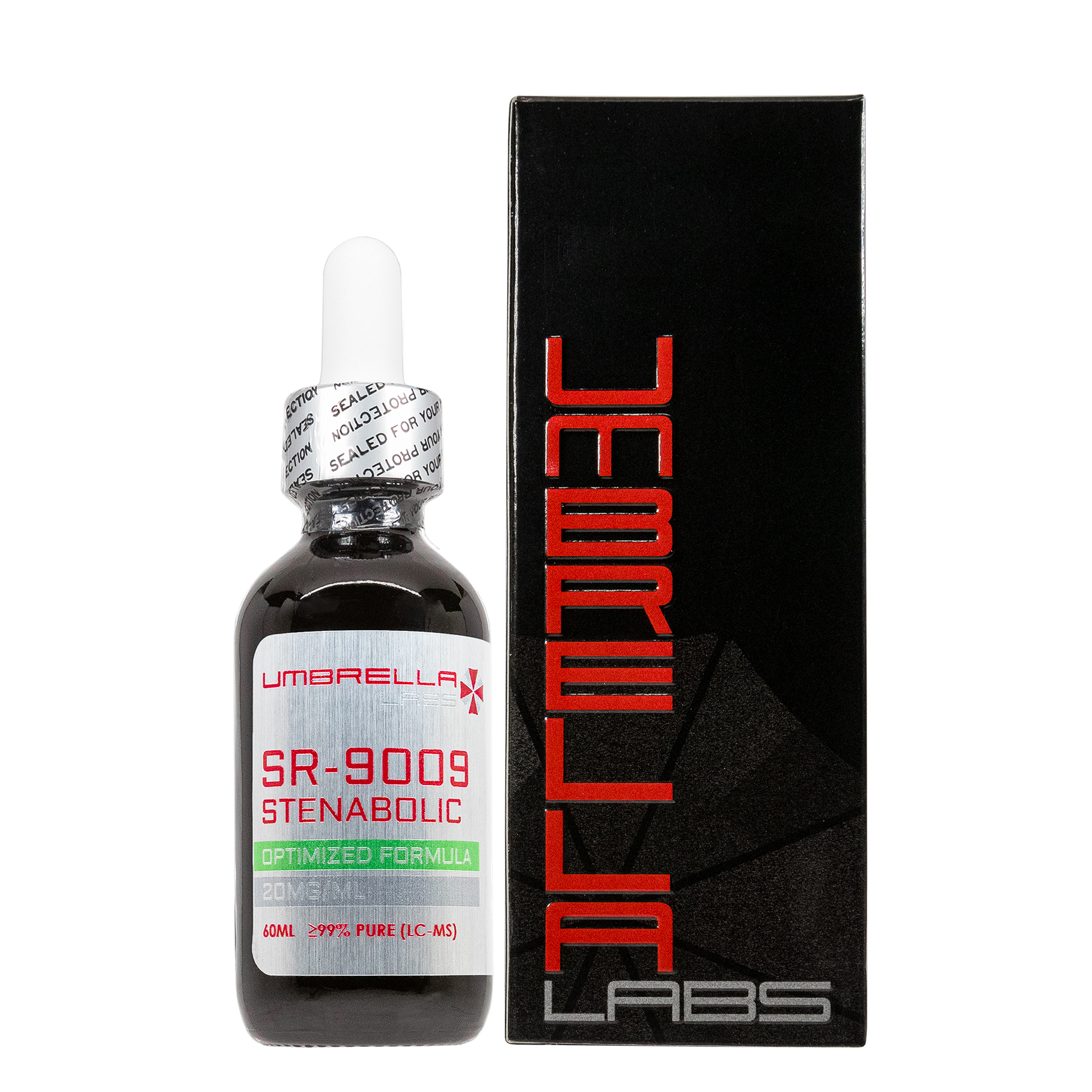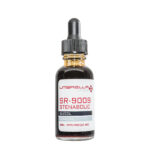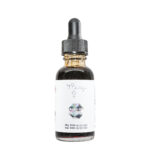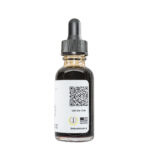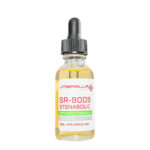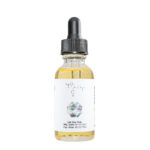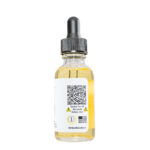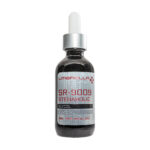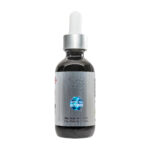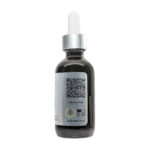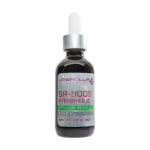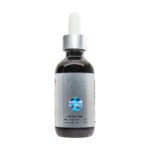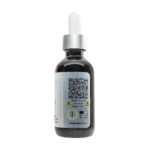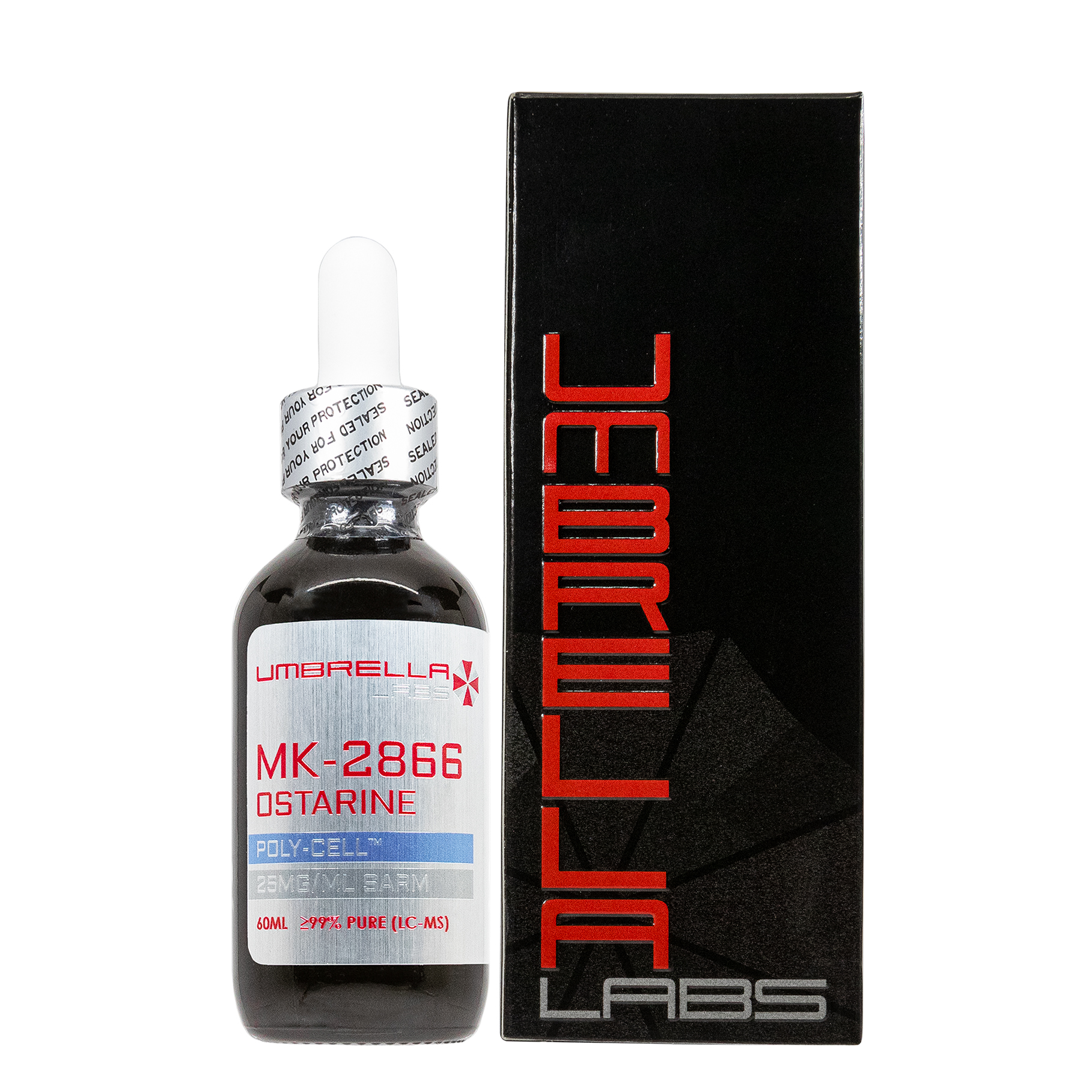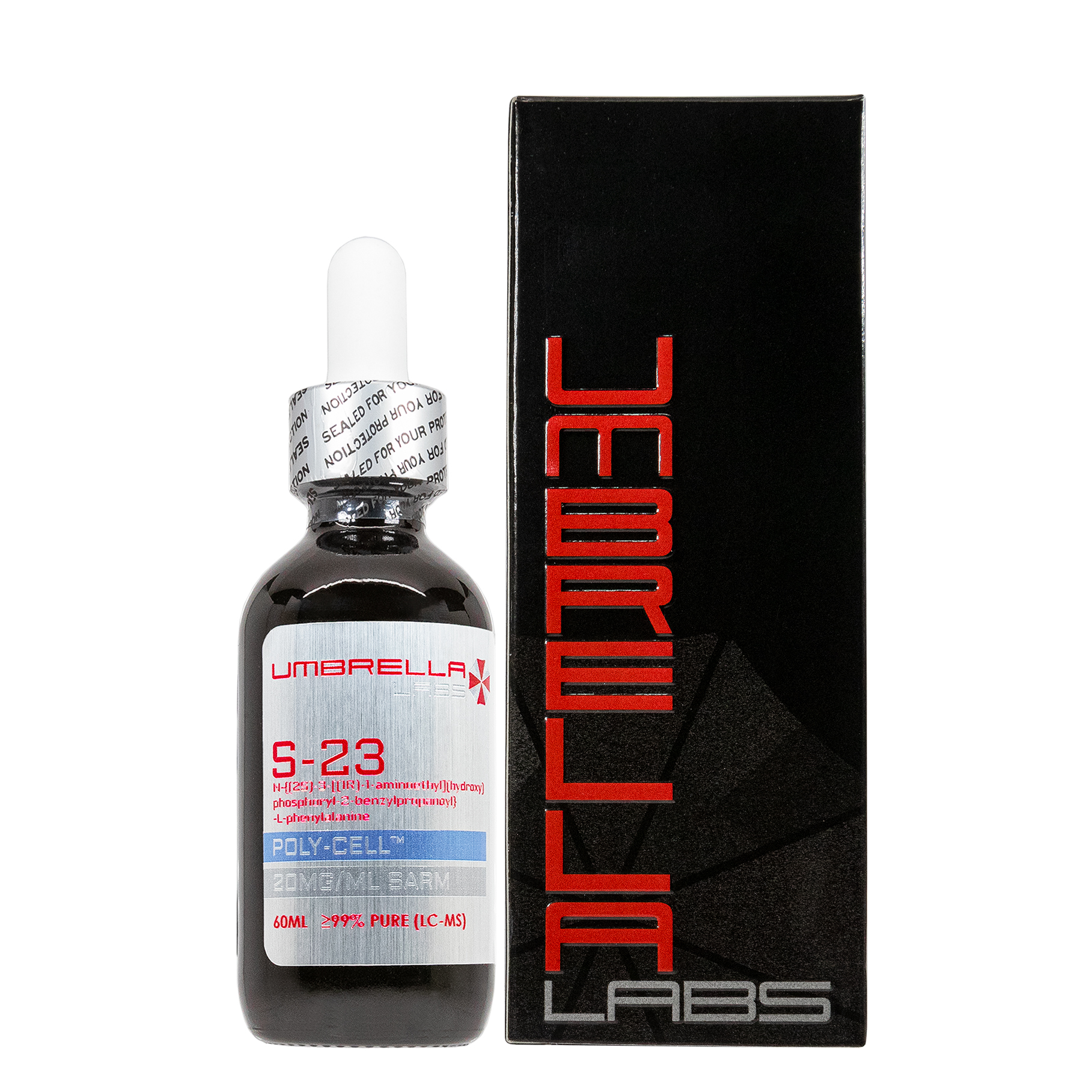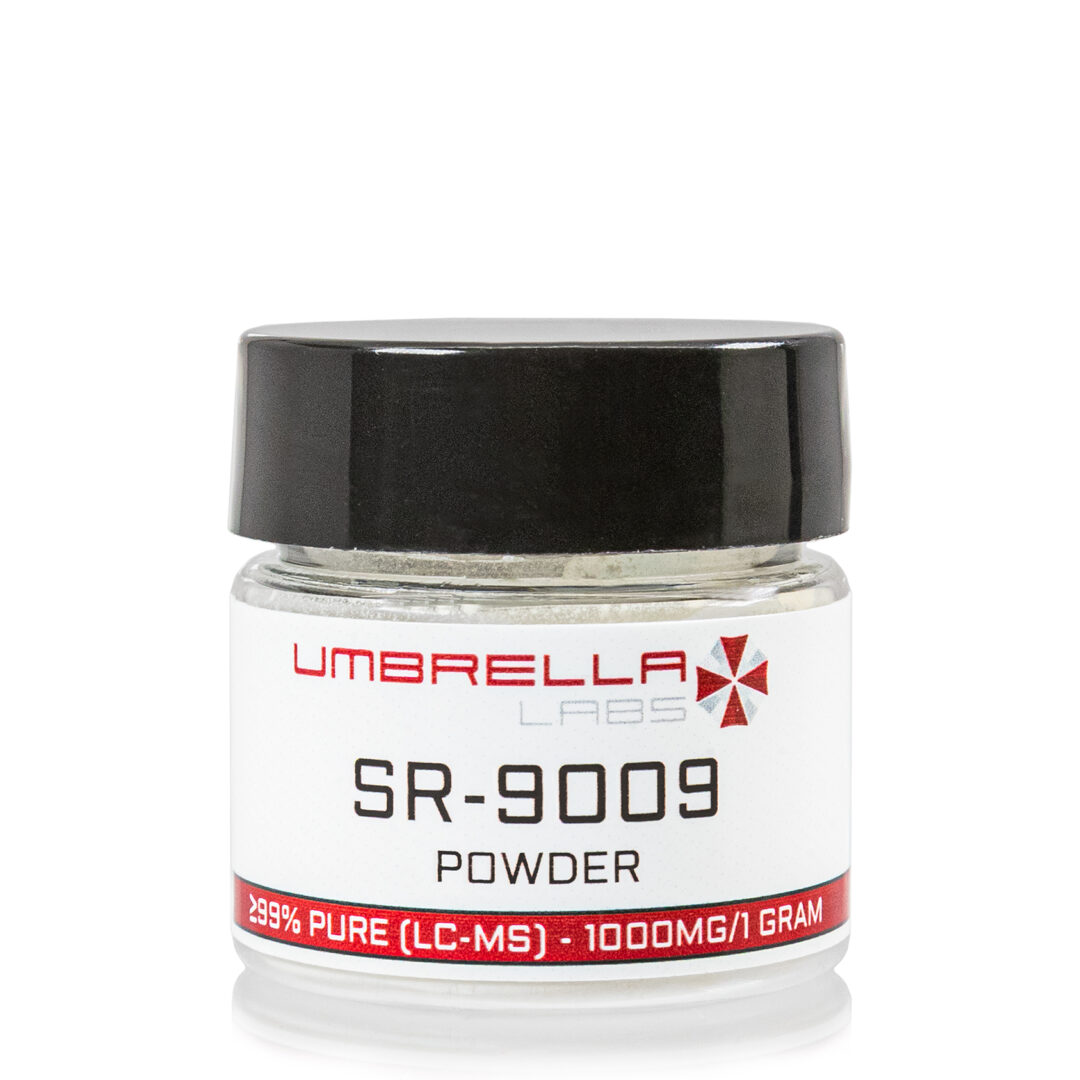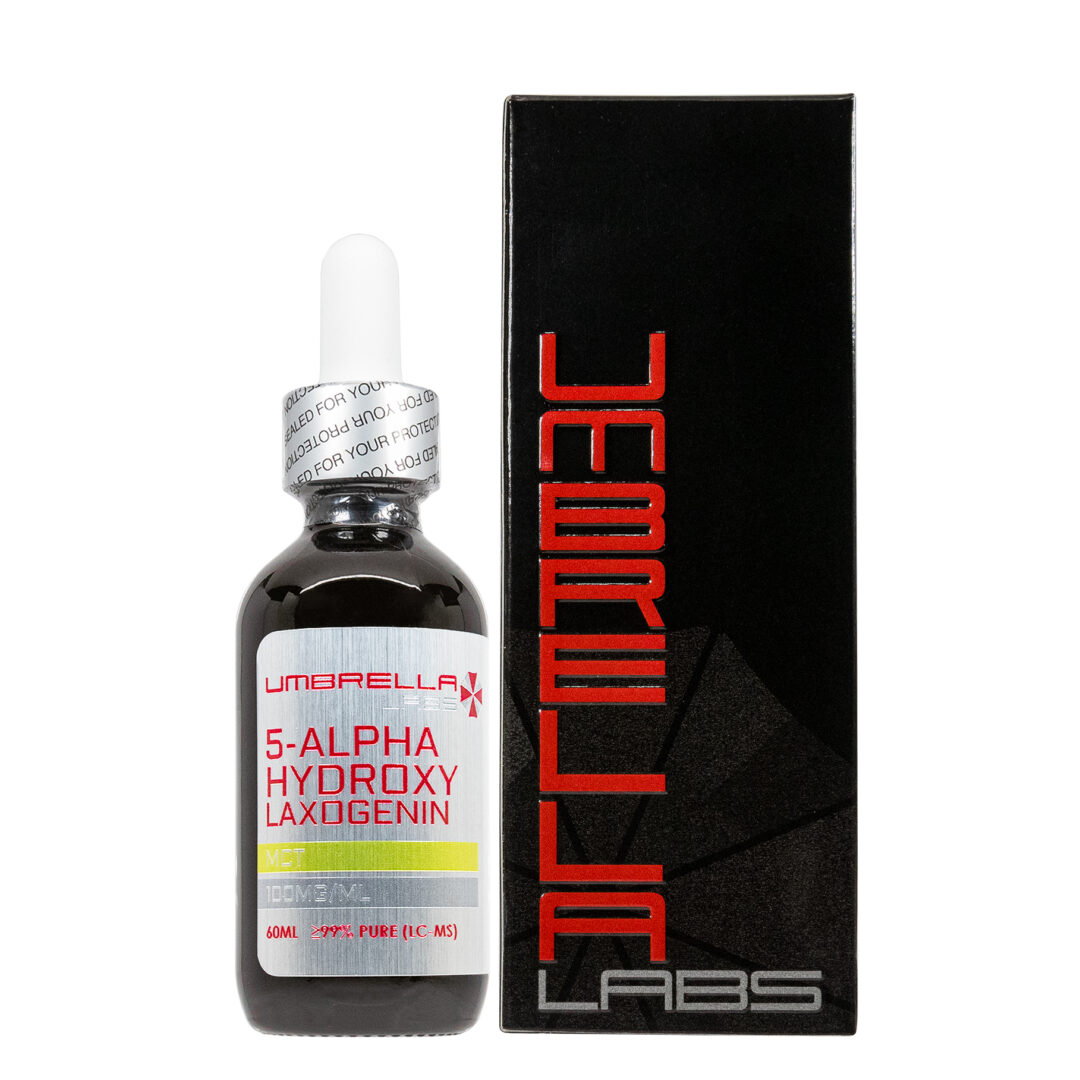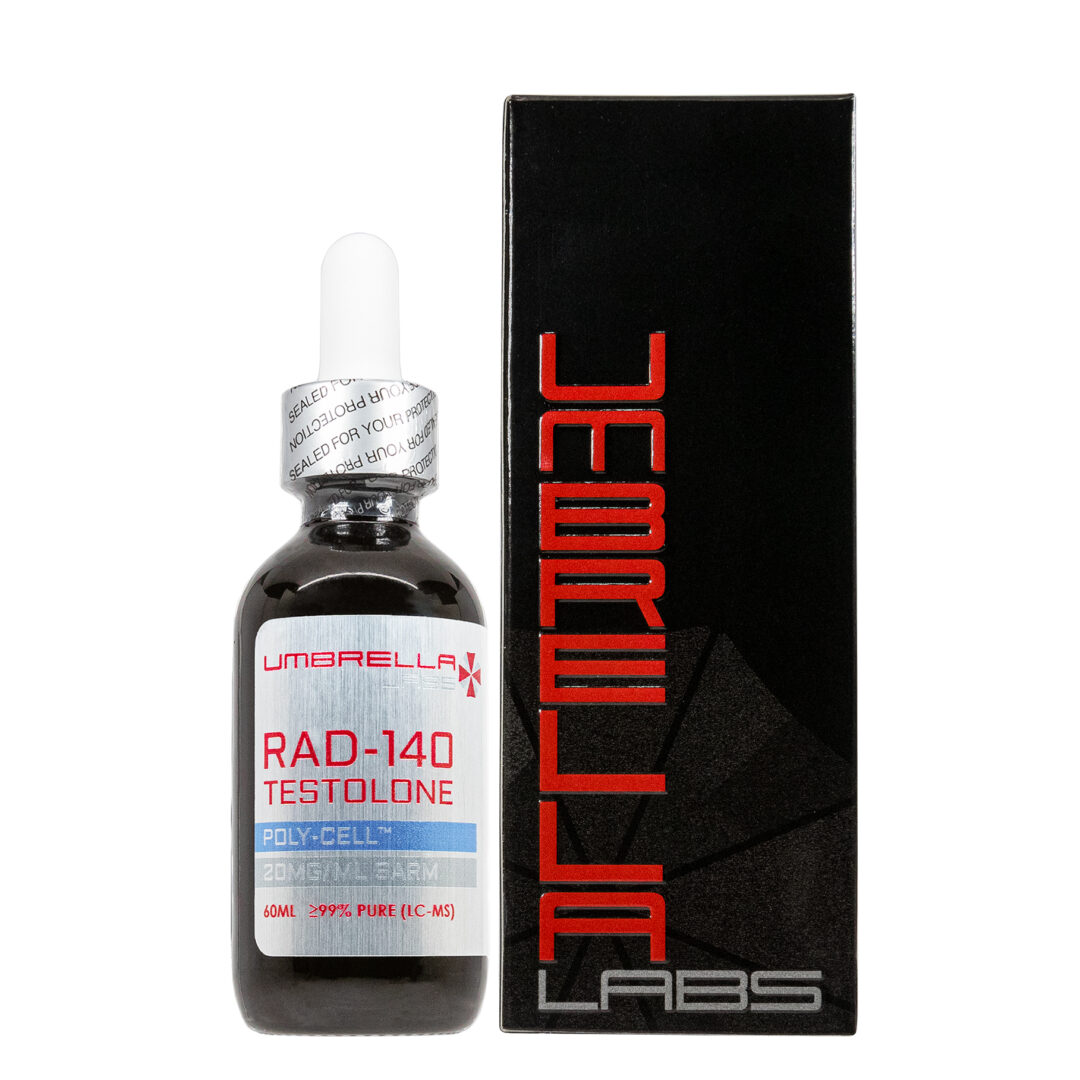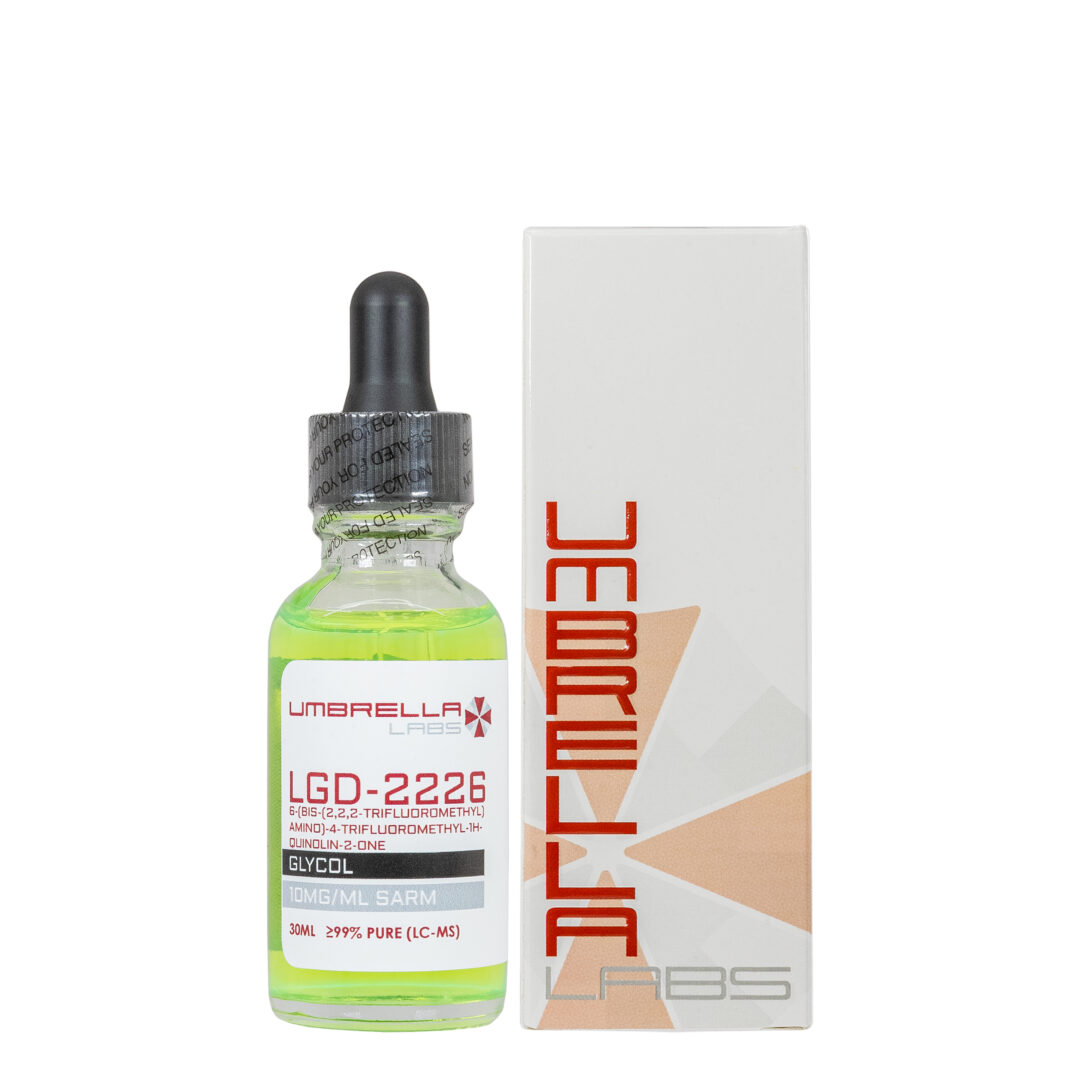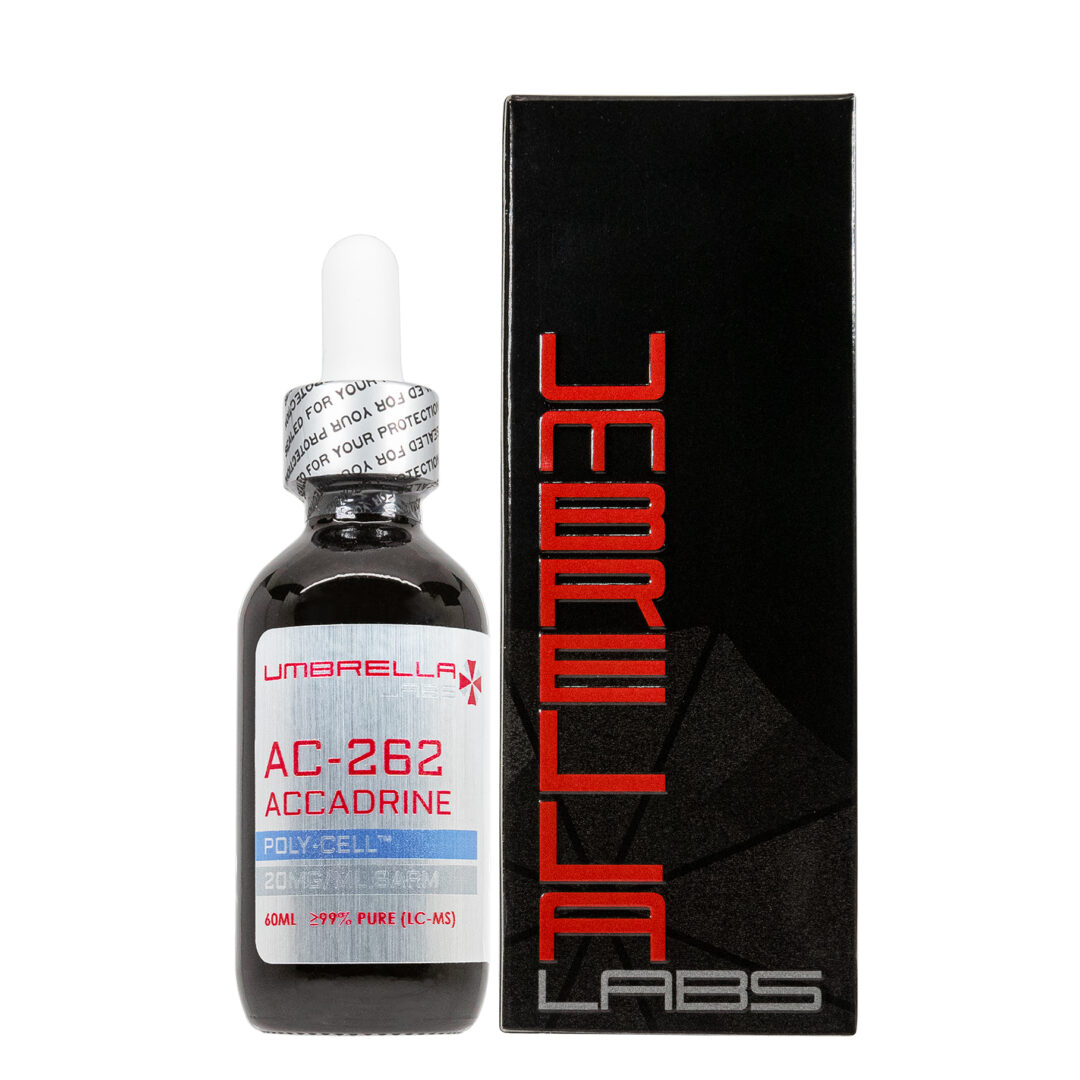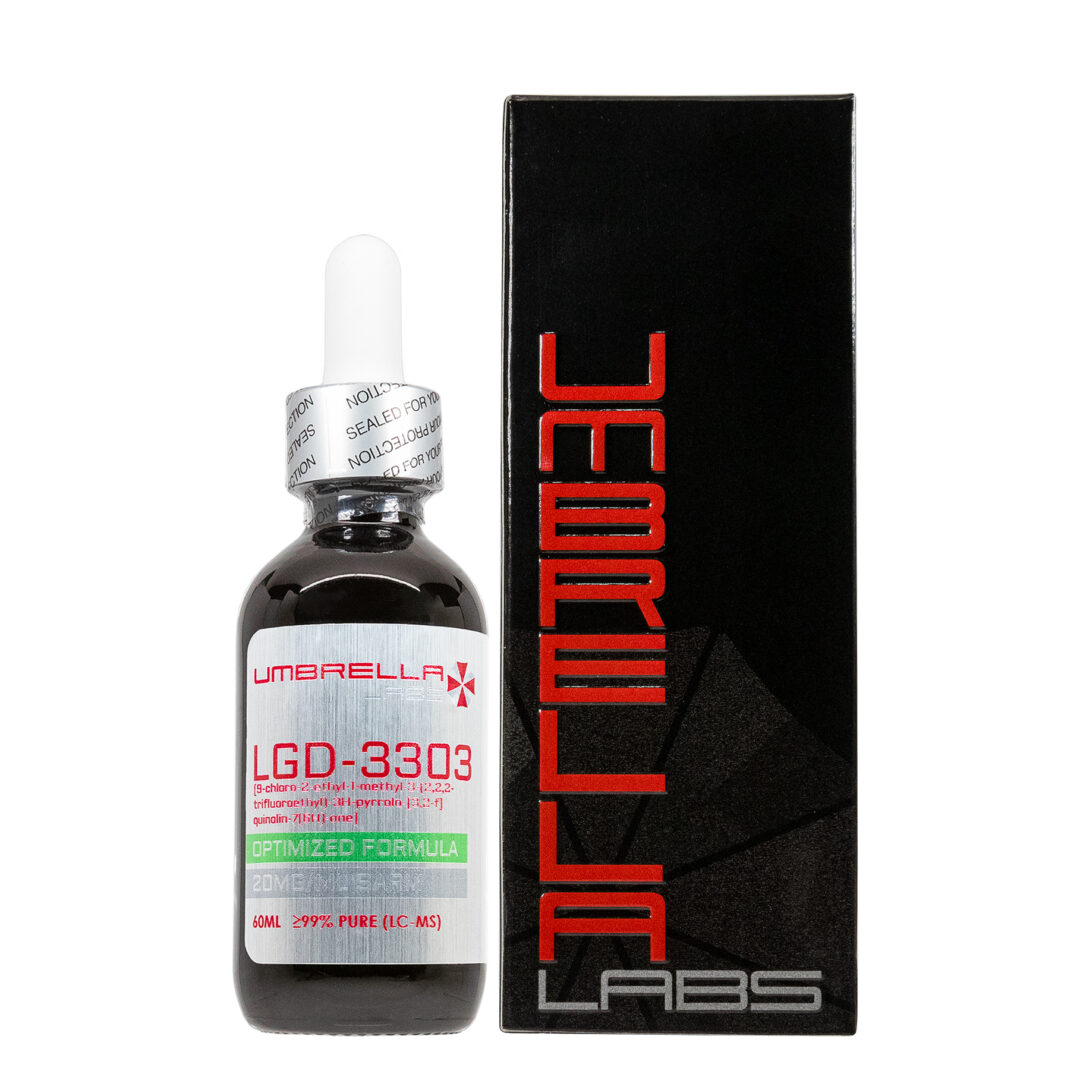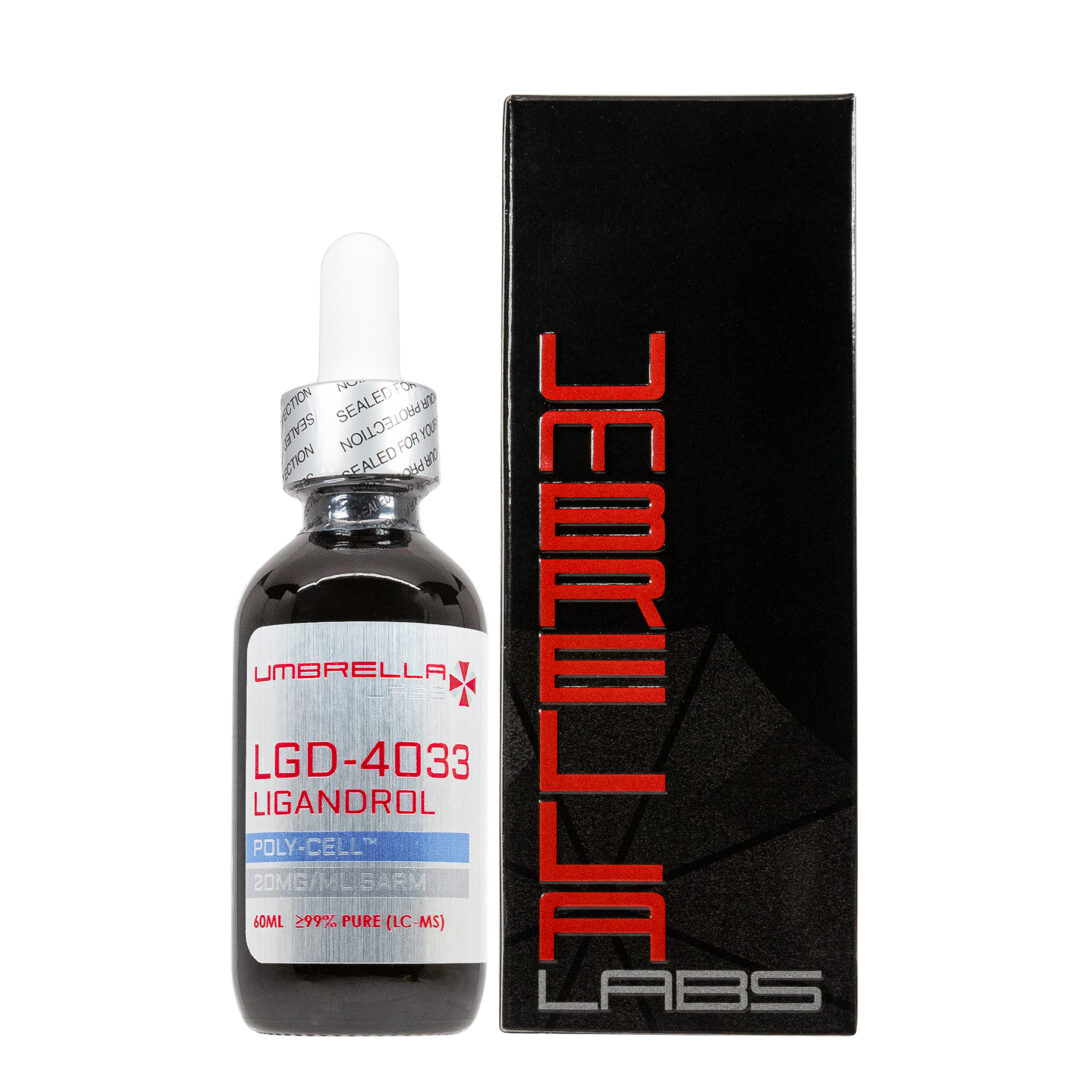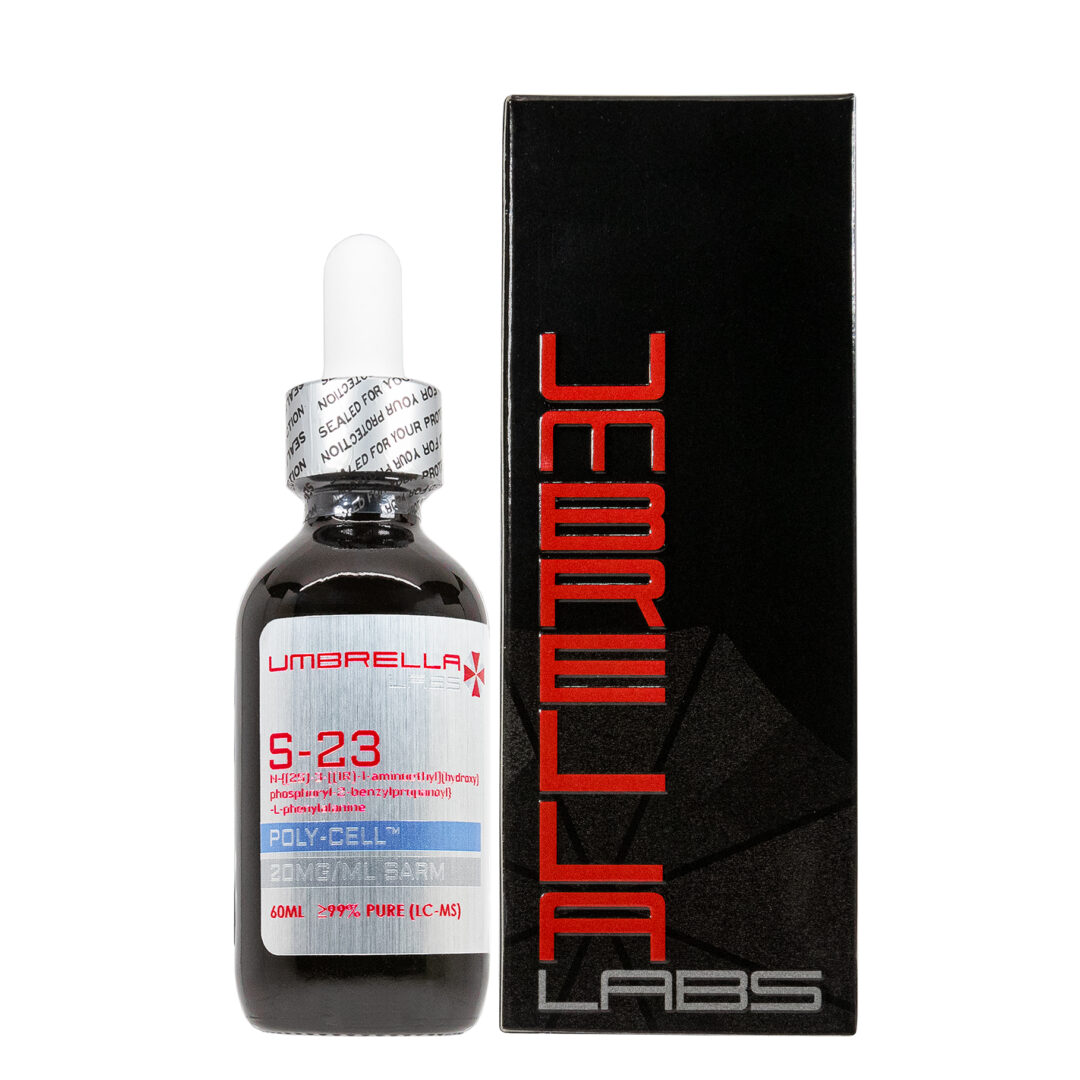SR-9009 STENABOLIC – 20MG/ML – 30 ML/60ML BOTTLE
$70.99 – $154.98
SR-9009 is sold for laboratory research use only. Terms of sale apply. Not for human consumption, nor medical, veterinary, or household uses. Please familiarize yourself with our Terms & Conditions prior to ordering.
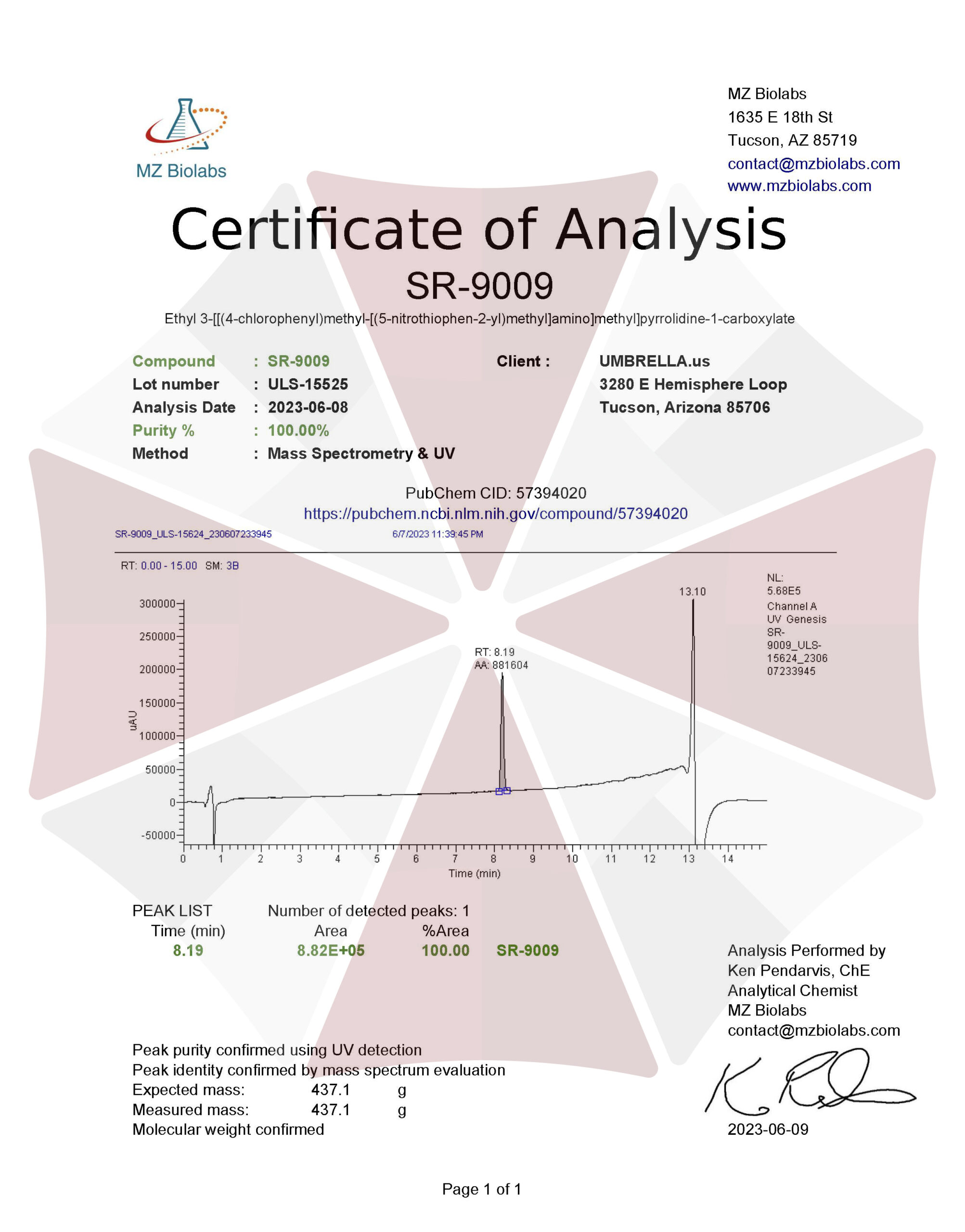
Also Available In:
- Description
- Additional information
Description
SR-9009 Stenabolic Liquid
![]()
![]()
![]()
![]()
![]()
![]()
![]()
![]()

| CAS Number | 1379686-30-2 |
| Other Names | SR9009, SR 9009, Stenabolic, X5DCA09N30, CHEMBL1961796, REV-ERB Agonist II, UNII-X5DCA09N30, GTPL8901 |
| IUPAC Name | ethyl 3-[[(4-chlorophenyl)methyl-[(5-nitrothiophen-2-yl)methyl]amino]methyl]pyrrolidine-1-carboxylate |
| Molecular Formula | C₂₀H₂₄ClN₃O₄S |
| Molecular Weight | 437.9 |
| Purity | ≥99% Pure (LC-MS) |
| Liquid Availability |
|
| Powder Availability | |
| Gel Availability | |
| Storage | Store in cool dry environment, away from direct sunlight. |
| Terms | All products are for laboratory developmental research USE ONLY. Products are not for human consumption. |
What is SR-9009?
SR-9009 is a stenabolic SARM that has been studied in mice and shown to increase running speed, decrease levels of obesity, and stimulate mitochondrial production, thus enhancing muscle mass and metabolism. While SR-9009 falls under the category of SARMs, it is commonly considered as REV-ERB-A, a protein found in the liver, skeletal muscles, and brain, and it is best known for affecting circadian rhythm and metabolic regulation.
Main Research Findings
1) REV-ERB agonists like SR-9009 are capable of regulating circadian rhythm and metabolic activity.
2) As an REV-ERB agonist, SR-9009 has shown the potential to elicit anti-small-cell lung cancer effects through the inhibition of autophagy.
Selected Data
1) Researchers Solt et. Al examined how the popular SARM and REV-ERB agonist, SR-9009, assists in the regulation of circadian rhythm and metabolic action in mice. Mammalian circadian rhythm is promoted by the suprachiasmatic nucleus (SCN) of the hypothalamus as well as a transcriptional feedback loop. The negative feedback loops is primarily composed of heterodimers of the transcription factors BMAL1 (brain and muscle ARNT-like protein 1), CLOCK (circadian locomotor output cycles kaput), or NPAS2 (Neuronal PAS domain-containing protein 2). These heterodimers activate the transcription of Per 1, Per 2, Per 3, Cry1, and Cry2 (PER/CRY) genes. PER/CRY proteins inhibit the activity of BMAL1/CLOCK which results in a rhythmic, circadian pattern of gene expression [1].
REV-ERB receptors like SR-9009 play a crucial role in feedback regulation of the circadian rhythm since both Bmal1 and Clock genes are direct targets of the receptors. Current research has found that loss of the REV-ERB-alpha protein leads to altered circadian behavior. Additionally, the physiological ligand for both REV-ERB-alpha and -beta was identified as a heme; the next step of experimentation allowed researchers to observe how a small molecule ligand regulated REV-ERB activity, as well as identify and characterize various synthetically developed ligands.
The research team developed two REV-ERB agonists, labeled as alpha and beta, in order to track receptor activity in HEK293 cells expressing a chimeric Gal4 DNA Binding Domain (DBD) – REV-ERB ligand binding domain (LBD) alpha or beta, as well as a Gal4-responsive luciferase reporter. Circular dichroism analysis was used to confirm direct binding of SR-9009 to REV-ERB-alpha. Following these initial procedures, the next step was to examine the expression of REV-ERB responsive genes in mice liver. Over the course of six days the animals were treated with various doses of both SR-9011 and SR-9009 [1].
When identifying how the REV-ERB agonist modulated gene expression and circadian rhythm in mice, the research team began by predicting how administration of the SARMs would alter circadian rhythm. Mice were released into constant dark conditions (D:D) after one week of housing in a standard 12 hour light, 12 hour dark schedule. A single dose of SR-9011 or SR-9009 was administered to the mice after 12 days in D:D conditions. Expression analysis of core clock genes in the hypothalami from mice in D:D conditions were assessed by a single subcutaneous injection of SR-9011 and SR-9009. Additionally, the researchers observed the effects of both REV-ERB ligands in the mice that experienced 12 hour light and 12 hour dark conditions (L:D).
Since REV-ERB compounds have the potential to regulate genes involved in lipid and glucose metabolism, SR-9009 was administered to C57B16 mice while SR-9011 was administered to Balb/c mice in order to see effects on weight loss and fat mass. Due to the reported effects of the REV-ERB agonists on the C57BL6 and Balb/c mice, the researcher team conducted a secondary study utilizing 20-week-old C57BL6 mice maintained on a high fat diet for 14 weeks. Following 14 weeks of a high fat diet the same eating pattern was maintained with the addition of twice-daily administration of SR-9009 [1].
2) The research team of Shen et. Al examined the ability of SR-9009 to prevent small-cell lung cancer through the inhibition of autophagy in a REV-ERB dependent manner. Natural circadian rhythm is able to coordinate cell proliferation and metabolism, as well as progress diseases like cancer. Due to the active role SR-9009 plays in mediation of the circadian clock, this experiment was conducted in order to determine the potential antitumor mechanism of the compound. The initial steps of the study investigated whether SR-9009 exhibited cytotoxicity to H69 and H446 chemosensitive cells as well as the corresponding chemoresistant cells, H69AR and H446DDP, these were labeled as small-cell lung cancer (SCLC) cells. The SCLC cells were treated with increasing concentrations over the course of 72 hours in order to determine the effects elicited by SR-9009. The research team also evaluated how the REV-ERB agonist affects cell migration and invasion as well as which characteristics were significant to the progression of cancer [2].
Typical antitumor drugs induce cell death through apoptosis. This led the researchers to question whether SR-9009 can promote apoptosis in SCLC cells. Western blot analysis was used to identify the presence of apoptotic proteins and changes in SCLC cell viability in response to treatment with SR-9009. Additionally, the research team used a general caspase family inhibitor to determine with apoptosis induced by SR-9009 was caspase-dependent. Subcutaneous tumor models were also established in mice with both chemosensitive and chemoresistant SCLC cells. The tumor-bearing mice were administered either SR-9009, chemotherapeutic drugs, or a combination of both.
The next portion of the experiment attempted to ascertain whether the effects of SR-9009 in SCLC cells are mediated by two different REV-ERBcompounds, labeled as alpha and beta. Basal expression of REV-ERB-alpha and REV-ERB-beta was examined using human bronchial epithelial (HBE) cells as a control group, compared to the chemosensitive and chemoresistant SCLC cell lines. The results led the researchers to further examine whether expression of REV-ERB-alpha can be increased with treatment with SR-9009. In order to specify the mechanism through which the SARM induces antitumor effects, small interfering RNA (siRNA) was used to known down REV-ERB-alpha [2].
Furthermore, examination of the effects of REV-ERB-alpha on the core autophagy gene, Atg5. Initial results were reported through the use of ChIP sequencing assays that reveal the presence of core autophagy genes. SR-9009 was then applied in order to identify the autophagy genes exhibiting repressed expression in response to REV-ERB-alpha binding to the promoter. Immunohistochemistry was also utilized to examine the expression of Atg5 in previously established SCLC subcutaneous tumor models. Activity of REV-ERB-alpha binding in the Atg5 promoter region was predicted through the UCSC database and analysis of Atg5 peaks in the initial ChIP-sequence assay. This procedure was followed by ChIP quantitative PCR assays.
The final step of the study was to further verify the autophagy-inhibiting effects of SRR-9009 by measuring autophagy activity in H69ARR and H466DDP cells that had been treated with SR-9009. Autophagosomes were evaluated through the use of laser confocal microscopy, TEM, and western blotting analysis [2].
Discussion
1) When examining the effects of the REV-ERB agonists on REV-ERB-dependent repressor activity the results showed that both SR-9011 and SR-9009 dose-dependently increased repressor activity in the HEK293 cells that expressed a chimeric Gal4 DNA DBD-LBD as well as a Gal4-responsive luciferase reporter. The use of cotransfection assay using full-length REV-ERB-alpha and a luciferase reporter driven by the Bmal1 promoter confirmed that SR-9009 was capable of effectively suppressing transcription. In a Rev-Erb-alpha/beta-dependent manner, SR-9009 was also able to suppress the expression of BMAL1 mRNA in HepG2 cells. Additionally, the research team noted that both SARMs increased recruitment of the CoRNR box peptide fragment using a biochemical assay. The use of circular dichroism analysis confirmed that there was direct binding of SR-9009 to REV-ERB-alpha. However, neither SR-9001 nor SR-9011 exhibited any activity at other nuclear receptors [1].
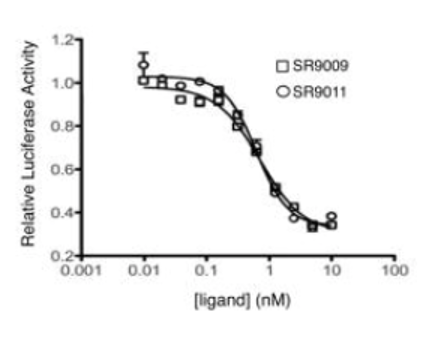
Figure 1: Relative luciferase activity reported after a dose of SR-9009 or SR-9011 in HEK293 cells
In terms of the ability of SR-9009 to alter circadian rhythm, the mice were kept in D:D conditions for 12 days before receiving a single 100 mg/kg dose of either SR-9011, SR-9009, or a vehicle. The vehicle injections resulted in no significant changes in circadian locomotor activity while a dose of either SR-9011 or SR-9009 led to a loss of locomotor activity during the subject dark phase. Since the SARM typically has a short half-life, normal locomotor activity returned less than 24 hours later before the start of the next circadian cycle. When comparing the D:D conditions to L:D conditions, loss of locomotor activity was not observed in the experiment conducted under standard conditions. This result allowed the researchers to conclude that effects on locomotor activity were not due to toxicity [1].
When assessing the expression of core clock genes in the hypothalami of test subject mice, there was a range of results of reported following treatment with a SR-9009. In regards to the expression of PER/CRY genes, researchers observed an enhancement in Per2 expression while Cry2 was suppressed. Expression of the Bmal1 gene was subtly affected; the researchers observed a left shift in the phase of the circadian pattern. Additionally, the circadian pattern Npas2 gene expression was eliminated completely while the expression pattern of Clock experienced an enhancement in oscillation amplitude so that Clock oscillation was in phase with the oscillation of the Per2 expression pattern.
The effects elicited by both REV-ERB ligands in the mice housed in D:D conditions were compared to the subjects maintained under L:D conditions. Instead of complete loss of locomotor activity, the L:D test subjects experienced a 1-3 hour delay in the onset of nocturnal locomotor activity. The researchers also observed that similar to the subtle effects of the SARMS on circadian rhythm in L:D conditions, SR-9009 elicited less severe effects on core clock gene expression. When the core clock genes are genetically altered, a range of metabolic phenotypes are developed while evidence suggests that REV-ERB compounds are directly involved in the metabolism of lipids and glucose [1].
Examination of metabolic regulations promoted by REV-ERB agonists revealed that administration of SR-9009 to C57B16 mice resulted in weight loss and decreased fat mass without an increase in food intake. These results that were observed led the research team to examine how SR-9009 affects obesity in rodents caused by maintenance of a high fat diet for 14 weeks. The researchers thought it was important to note that the slight decrease in weight experienced by the control group was due to the stress of handling and twice-daily injections. However, when treated with SR-9009, the rate of weight loss increased by 60% with no significant changes in food intake when comparing the treatment and control groups [1].
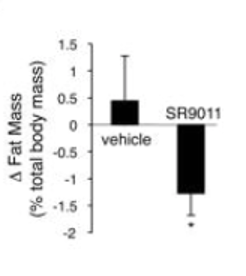
Figure 2: Change in fat mass in control group versus SR-9011 treatment group (similar effects were reported in the SR-9009 treatment group)
Additionally, the mice treated with SR-9009 experienced a drastic reduction of adiposity, as well as a 12% decrease in plasma triglycerides and 47% decrease in plasma total cholesterol. Plasma glucose and plasma non-esterified fatty acids were also reduced by 19% and 23%, respectively, with a notable downward trend in plasma insulin levels. Treatment with SR-9009 led to decreased total cholesterol and plasma triglyceride. These observations coincided with a dramatic decrease in the expressions of Fasn and Scd1 genes that encode lipogenic enzymes as well as a decrease in cholesterologenic regulatory proteins, Hmgcr and Srebf2. After 12 days of SR-9009 administration in a genetic model of obesity, the SARM was able to suppress the degree of weight gain in a manner similar to leptin-deficient mice, without drastically changing tolerance levels to insulin and glucose.
When observing the effects of SR-9009 in white adipose tissue (WAT), the research team identified a decrease in gene expression encoding enzymes involved in the synthesis of triglycerides. SR-9009 also induced expression of the Cpt1b, Ucp3, Ppargc1b, Pkm2, and Hk1 genes, all of which are involved in fatty acid and glucose oxidation. These results suggest that the REV-ERB agonists increase energy expenditure by inducing fatty acid and glucose oxidation through gene expression. This data also correlated with a decrease in triglyceride synthesis in the liver and WAT, in addition to reduced synthesis of hepatic cholesterol [1].
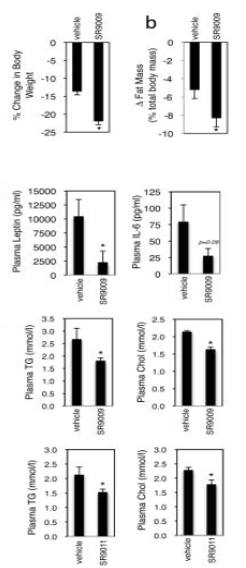
Figure 3: changes in plasma triglyceride, leptin, cholesterol, body weight, and fat mass
2) When investigating the cytotoxic effects of SR-9009 on SCLC, initial results reported that cytotoxicity was induced by SR-9009 in a dose-dependent manner in both chemosensitive and chemoresistant cells, H69 and H446, and H69AR and H446DDP, respectively. This suggests that SR-9009 could potentially act as an effective treatment for first- or second-line treatment of SCLC. Wound healing assays and transwell migration assays emphasized the ability of SR-9009 to significantly decrease cell migratory behaviors, as well as inhibit invasive cellular behaviors [2].
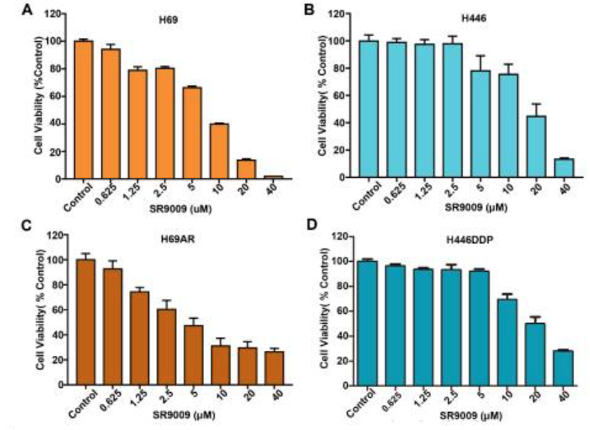
Figure 4: Cell viability in A) H69 chemosensitive cells, B) H446 chemosensitive cells, C) H69AAR chemoresistant cells, and D) H446DDP chemoresistant cells, in response to SR-9009
Additionally, western blot assays were used to observe the activation of apoptotic proteins in response to SR-9009 treatment; the proteins identified were PARP and caspase 3. Immunofluorescence assays for cleaved caspase 3 and TUNEL assays revealed that SR-9009 impaired SCLC cell viability, partially due to the induction of apoptosis. When determining whether apoptosis induced by SR-9009 was caspase-dependent the research team found that following pretreatment with z-VAD-fmk, cleaved caspase 3 and PARP were significantly decreased. However, results also revealed that SR-9009-induced cytotoxicity could be partially restored by z-VAD-fmk. These results allowed the researchers to conclude that SR-9009 has the potential to enhance caspase-dependent apoptosis in SCLC cells [2].
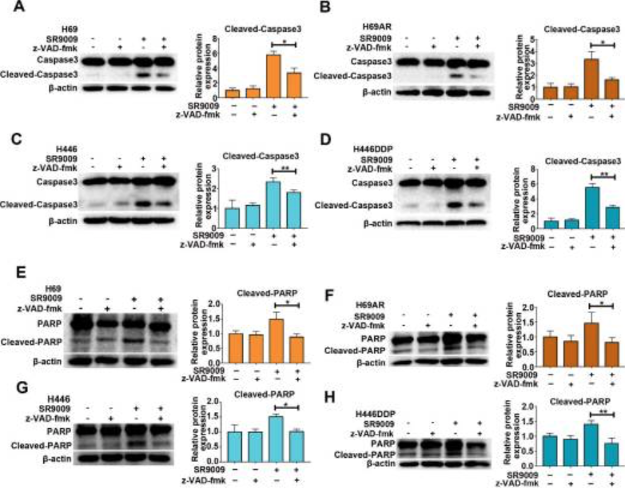
Figure 5: changes in caspase 3 and PARP in response to SR-9009 treatment in SCLC cells.
For the second portion of the study subcutaneous tumor models were established in mice with both types of SCLC cells. Results found that treatment with SR-9009 led to an inhibition of tumor growth in both the chemosensitive and chemoresistant models. Additionally, pretreatment with SR-9009 showed the potential to effectively sensitize resistant cells to chemotherapy. The data collected allowed the research team to conclude that SR-9009 exhibits potent antitumor effects against SCLC, independent of the chemoresistant status of the cells [2].
Further analysis occurred in order to determine whether the effects of SR-9009 are dependent on the expression of the REV-ERB proteins. Compared to HBE control cells, SCLC cells expressed high levels of REV-ERB-alpha and low levels of REV-ERB-beta, however protein expression of REV-ERB-alpha was increased after administration of SR-9009. When REV-ERB-alpha was knocked down by siRNA, the downregulation of the protein resulted in the inhibition of the anticancer activity of SR-9009. This indicated that REV-ERB-alpha is related to the antitumor effects of SR-9009 in SCLC cells.
The research team used ChIP-sequencing assay to determine the mechanism of action of SR-9009 in SCLC cells. Results of the assay revealed the presence of peaks in the core autophagy genes Atg5, Atg2A, Atg4C, Atg7, Atg13, Atg16L1, Atg101, AMBRA1, DRAM2, and Ulk1. This suggests that the REV-ERB-alpha compound can potentially bind to the promoters of autophagy genes in SCLC cells, leading to repressed expression of these genes. SR-9009 was then applied to emphasize which autophagy genes experienced repressed expression. The Atg5 gene was most significantly blocked following treatment with SR-9009 in both chemoresistant cell types. Immunohistochemistry solidified the initial findings, highlighting the significant inhibition in Atg5 gene expression in the SR-9009 treatment group [2].

Figure 6: Relative expression in the chemoresistant cells with and without SR-9009 treatment
ChIP-qPCR assays were conducted next in order to further investigate the role REV-ERB-alpha plays in the regulation of the autophagy gene, Atg5. Results of the assay found that REV-ERB-alpha was enriched in the Atg5 promoter. This indicates that Atg5 expression could potentially be repressed by the binding of REV-ERB-alpha to the Atg5 promoter, thus inhibiting promoter activity. The research team was able to conclude from the data that the Atg5 gene is a direct target of REV-ERB-alpha, and that the protein negatively regulates the autophagy gene in SCLC cells [2].
Disclaimer
**LAB USE ONLY**
*This information is for educational purposes only and does not constitute medical advice. THE PRODUCTS DESCRIBED HEREIN ARE FOR RESEARCH USE ONLY. All clinical research must be conducted with oversight from the appropriate Institutional Review Board (IRB). All preclinical research must be conducted with oversight from the appropriate Institutional Animal Care and Use Committee (IACUC) following the guidelines of the Animal Welfare Act (AWA).
Citations
[1] Solt LA, Wang Y, Banerjee S, Hughes T, Kojetin DJ, Lundasen T, Shin Y, Liu J, Cameron MD, Noel R, Yoo SH, Takahashi JS, Butler AA, Kamenecka TM, Burris TP. Regulation of circadian behaviour and metabolism by synthetic REV-ERB agonists. Nature. 2012 Mar 29;485(7396):62-8. doi: 10.1038/nature11030. PMID: 22460951; PMCID: PMC3343186.
[2] Shen W, Zhang W, Ye W, Wang H, Zhang Q, Shen J, Hong Q, Li X, Wen G, Wei T, Zhang J. SR9009 induces a REV-ERB dependent anti-small-cell lung cancer effect through inhibition of autophagy. Theranostics. 2020 Mar 15;10(10):4466-4480. doi: 10.7150/thno.42478. PMID: 32292508; PMCID: PMC7150483.
SR-9009 is sold for laboratory research use only. Terms of sale apply. Not for human consumption, nor medical, veterinary, or household uses. Please familiarize yourself with our Terms & Conditions prior to ordering.
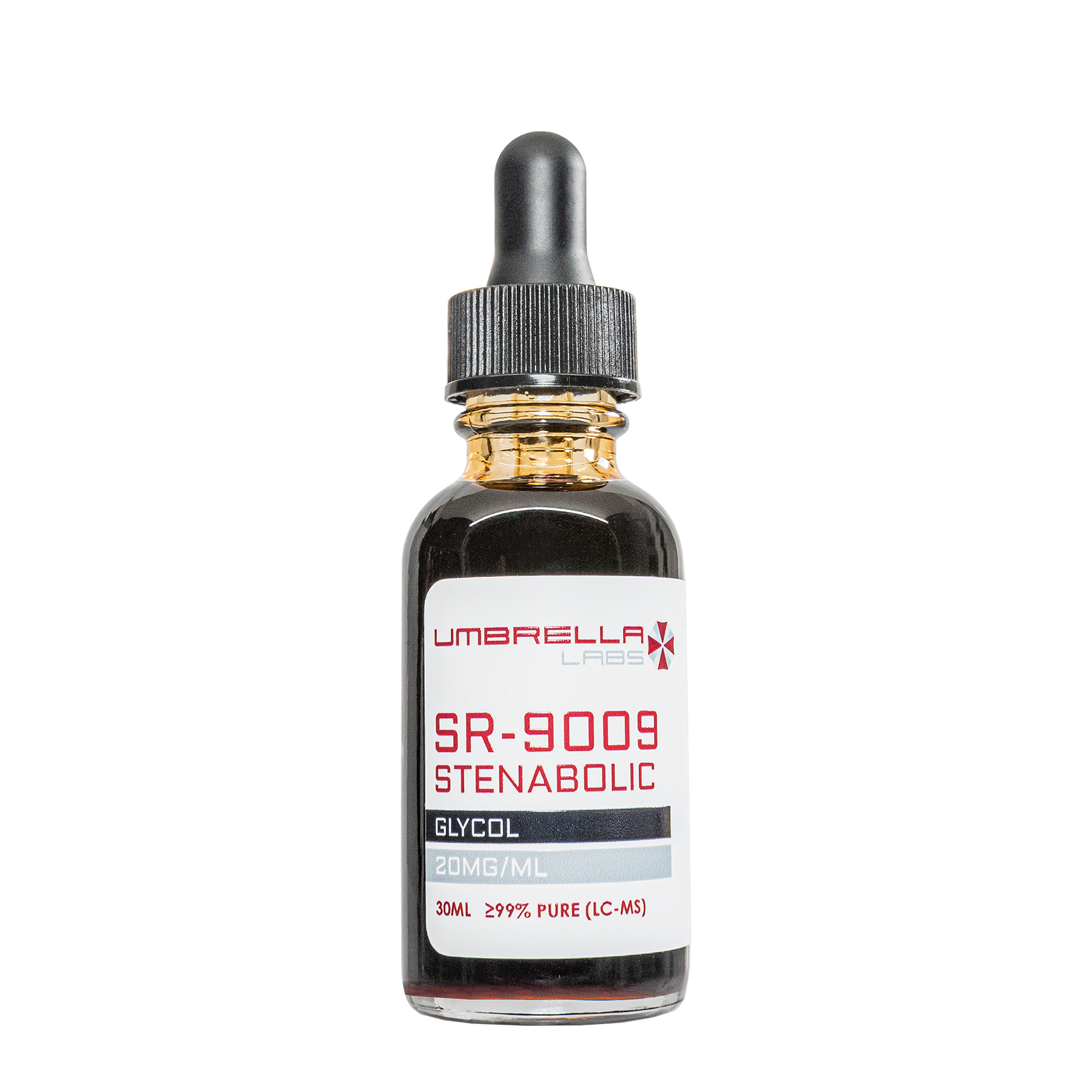
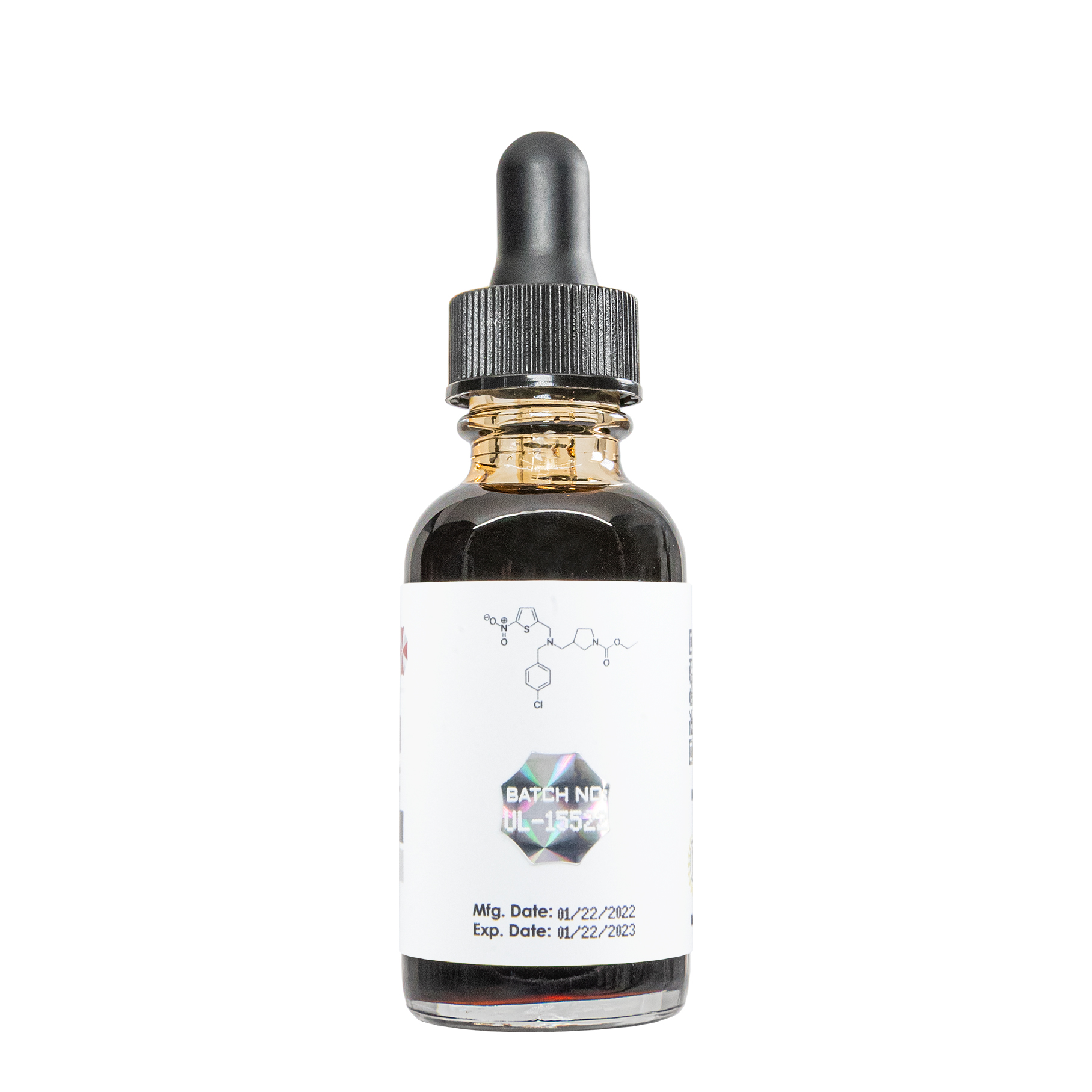
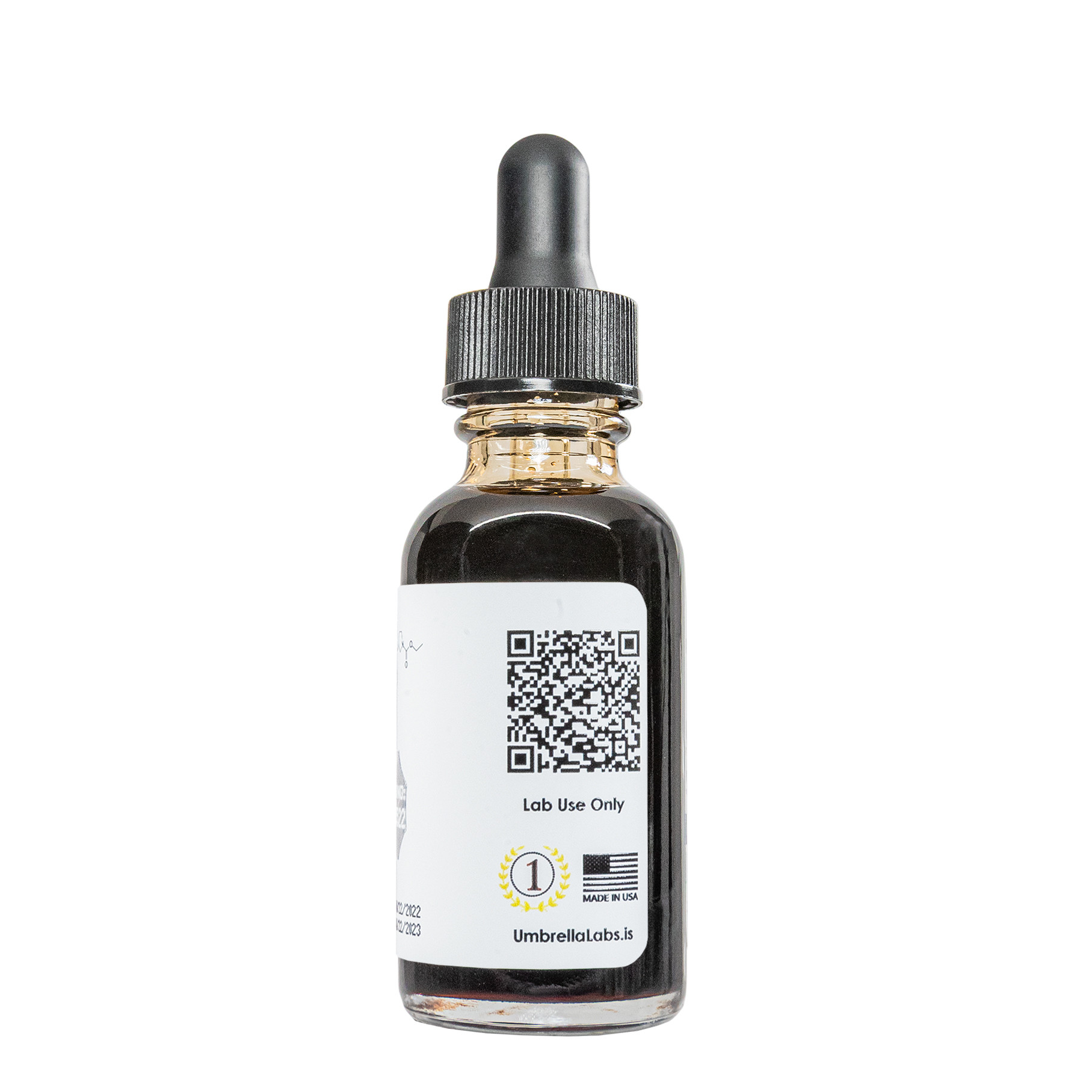
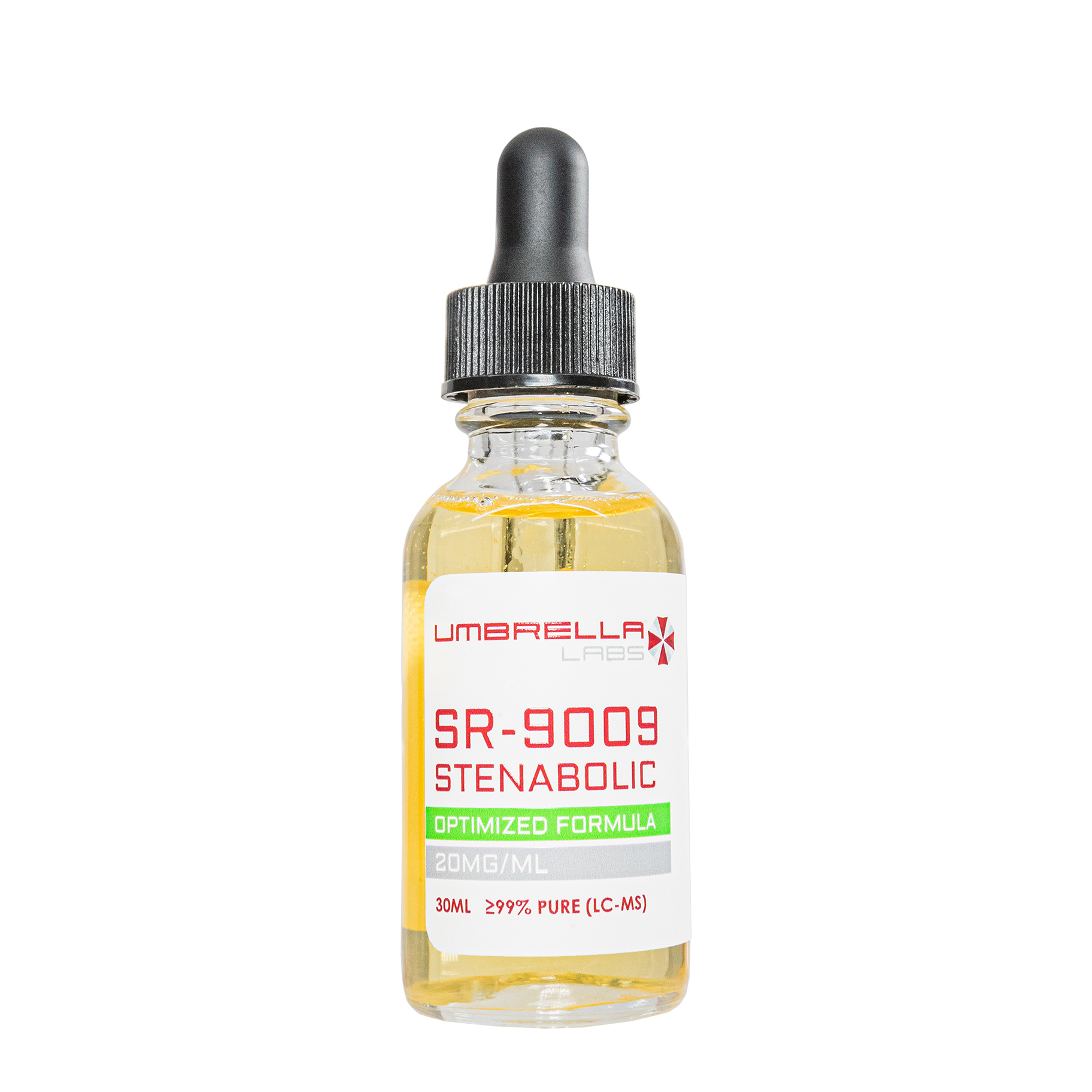
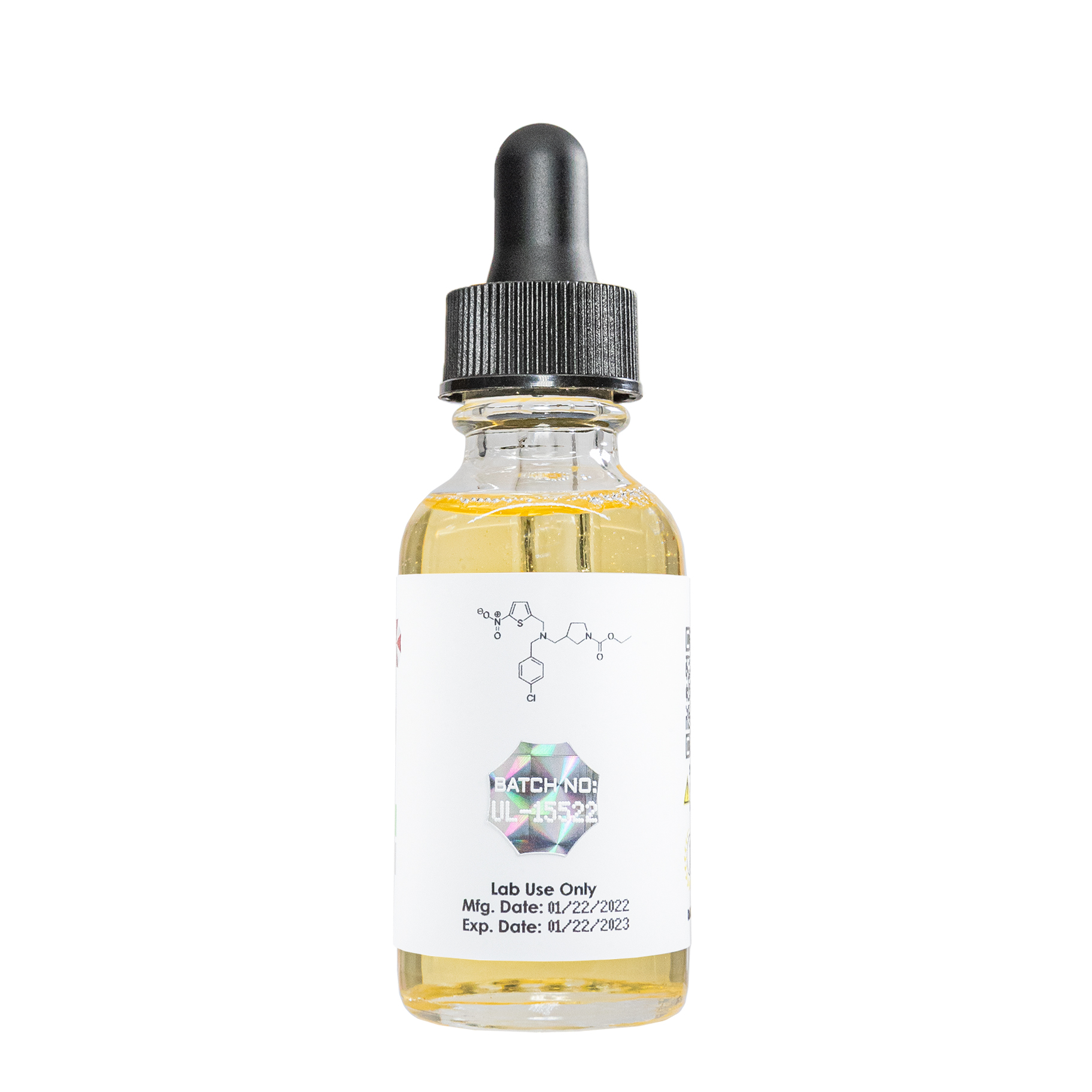
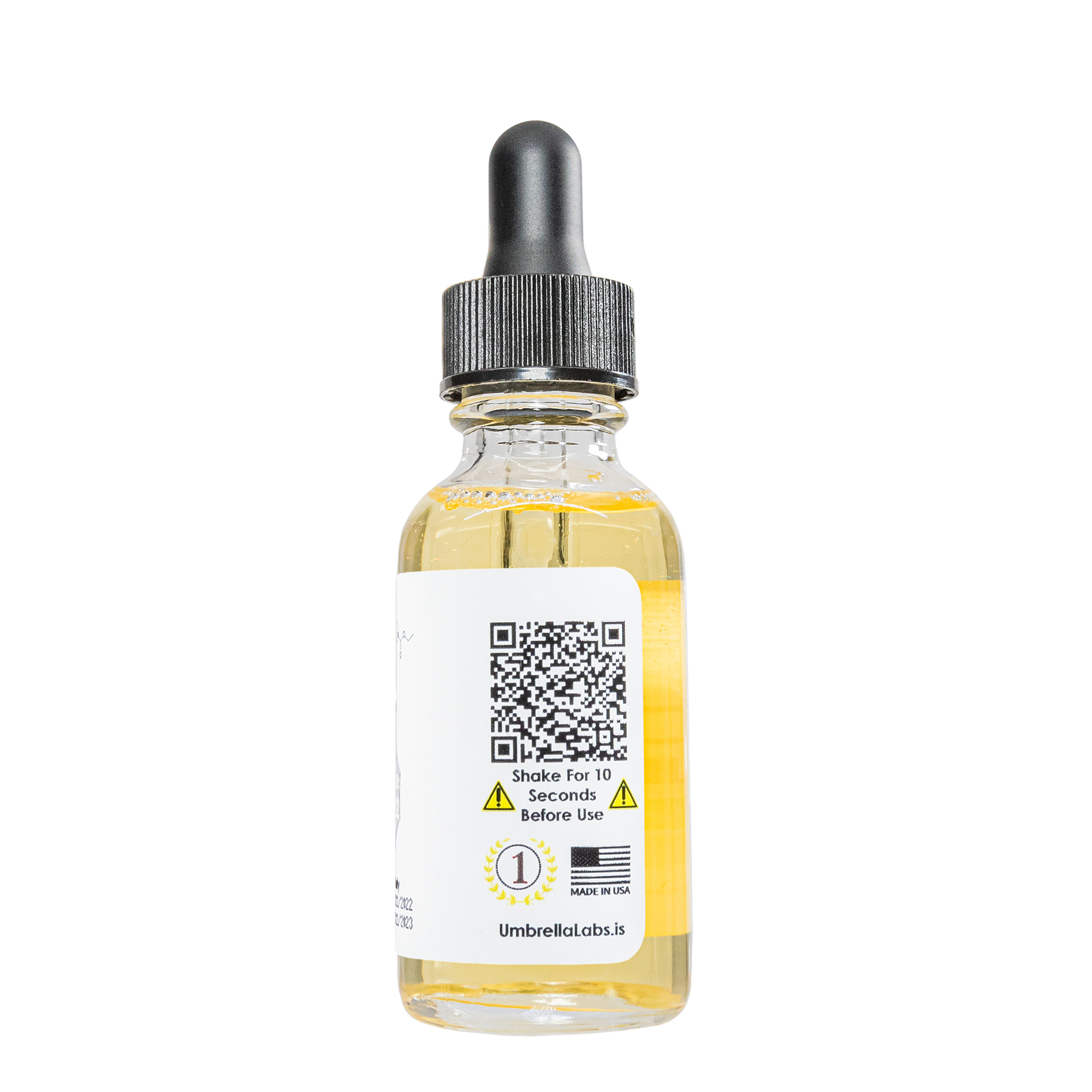
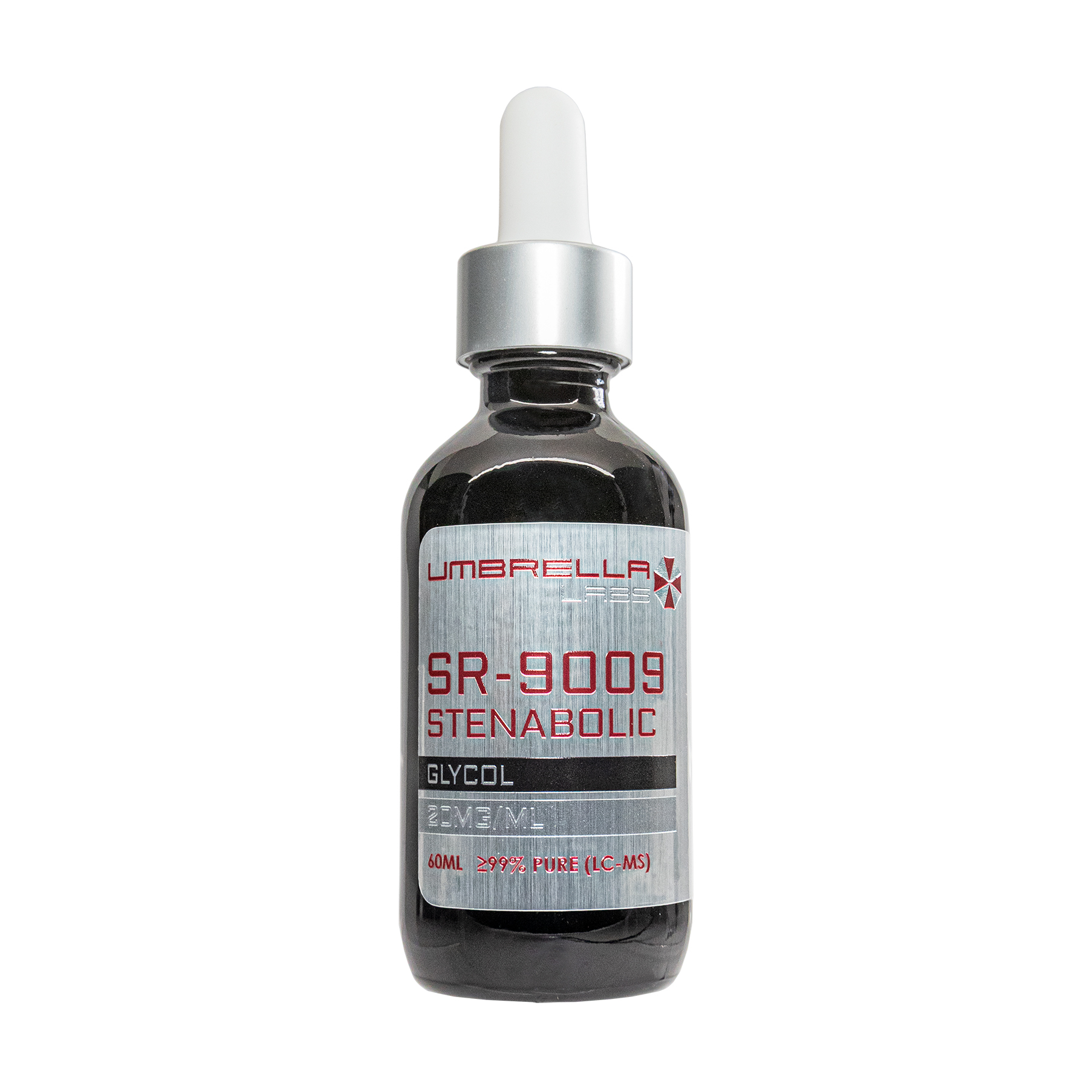
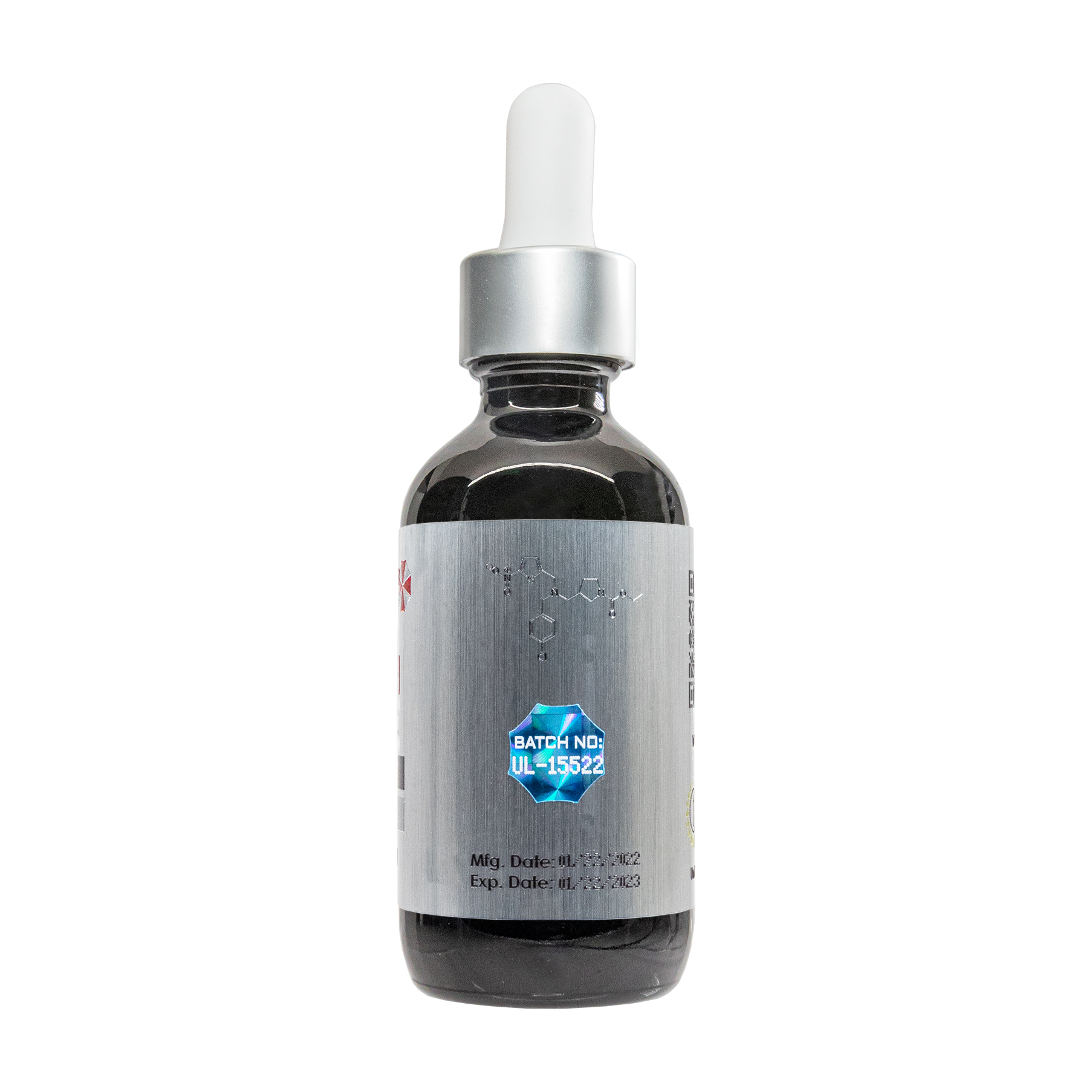
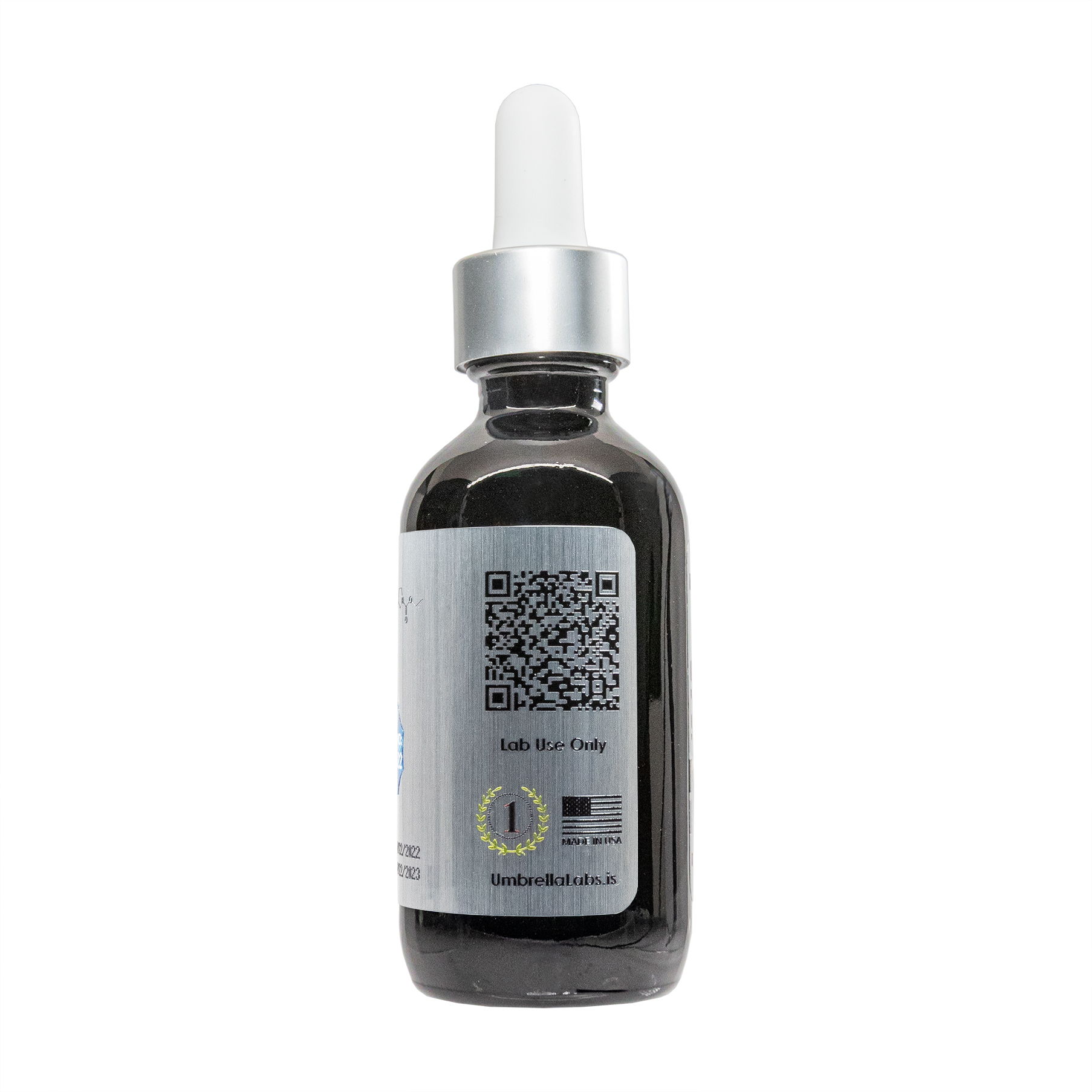
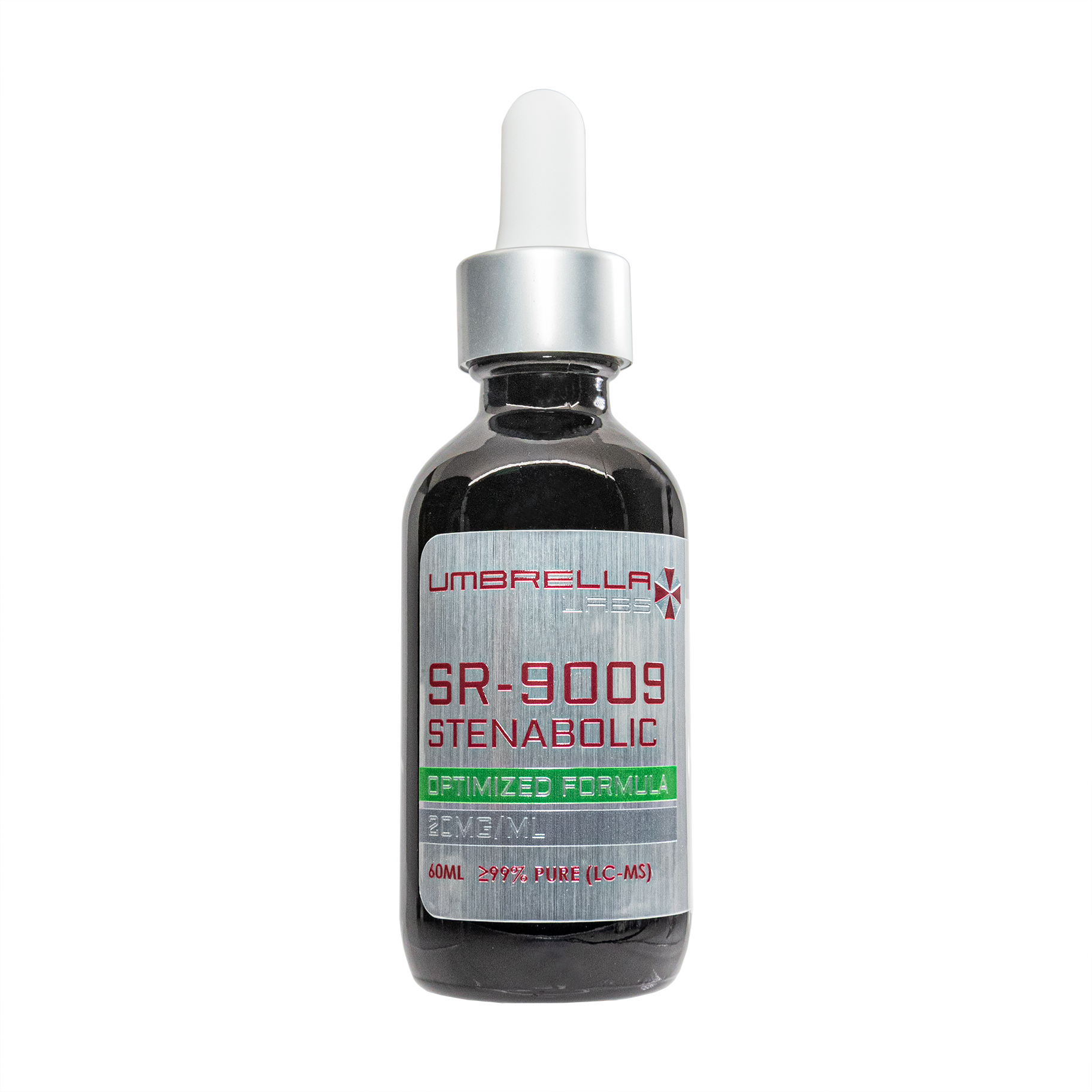
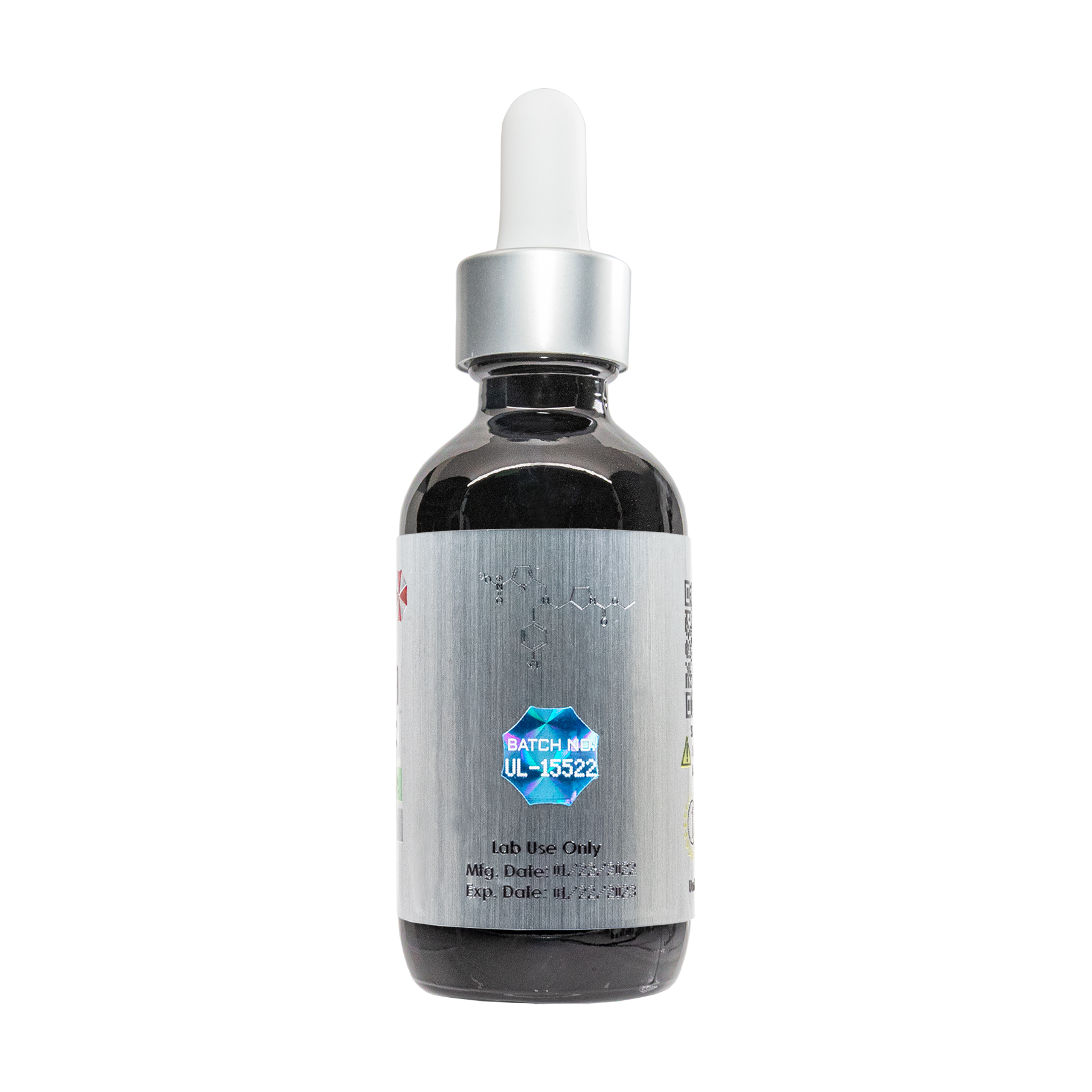
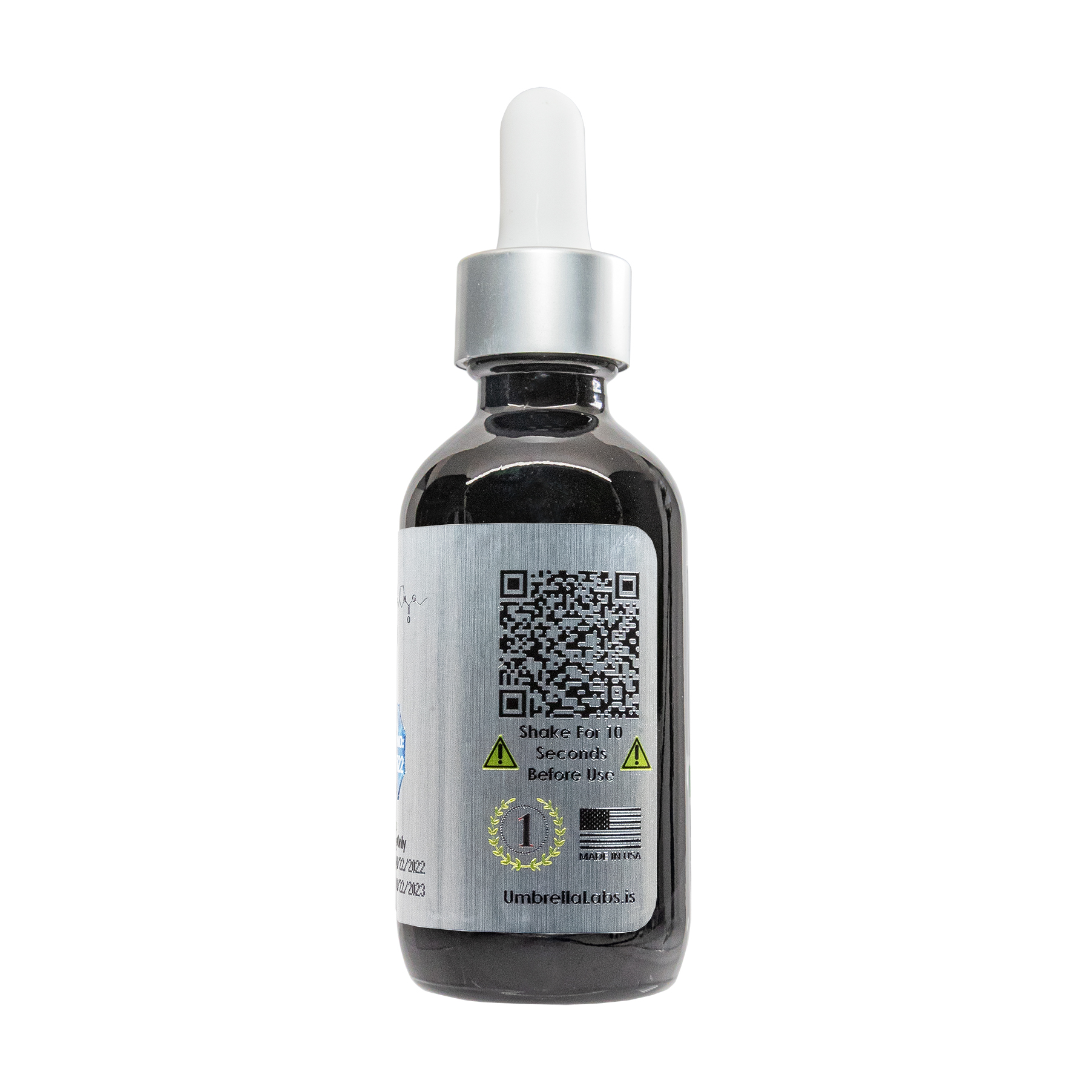

| File Name | View/Download |
| 06-08-2023-Umbrella-Labs-SR-9009-Stenabolic-Certificate-Of-Analysis-COA.pdf |
VIEW CERTIFICATES OF ANALYSIS (COA)
Additional information
| Weight | 4 oz |
|---|---|
| Dimensions | 3 × 3 × 5 in |
| Formula Option | Polyethylene Glycol (Original), Sublingual Optimized Formula |
| CAS Number | |
| PubChem CID | |
| ChEMBL ID | |
| ChemSpider ID | |
| Molar Mass | 437.9 g·mol−1 |
| Molecular Formula | C20H24ClN3O4S |
| Size |

